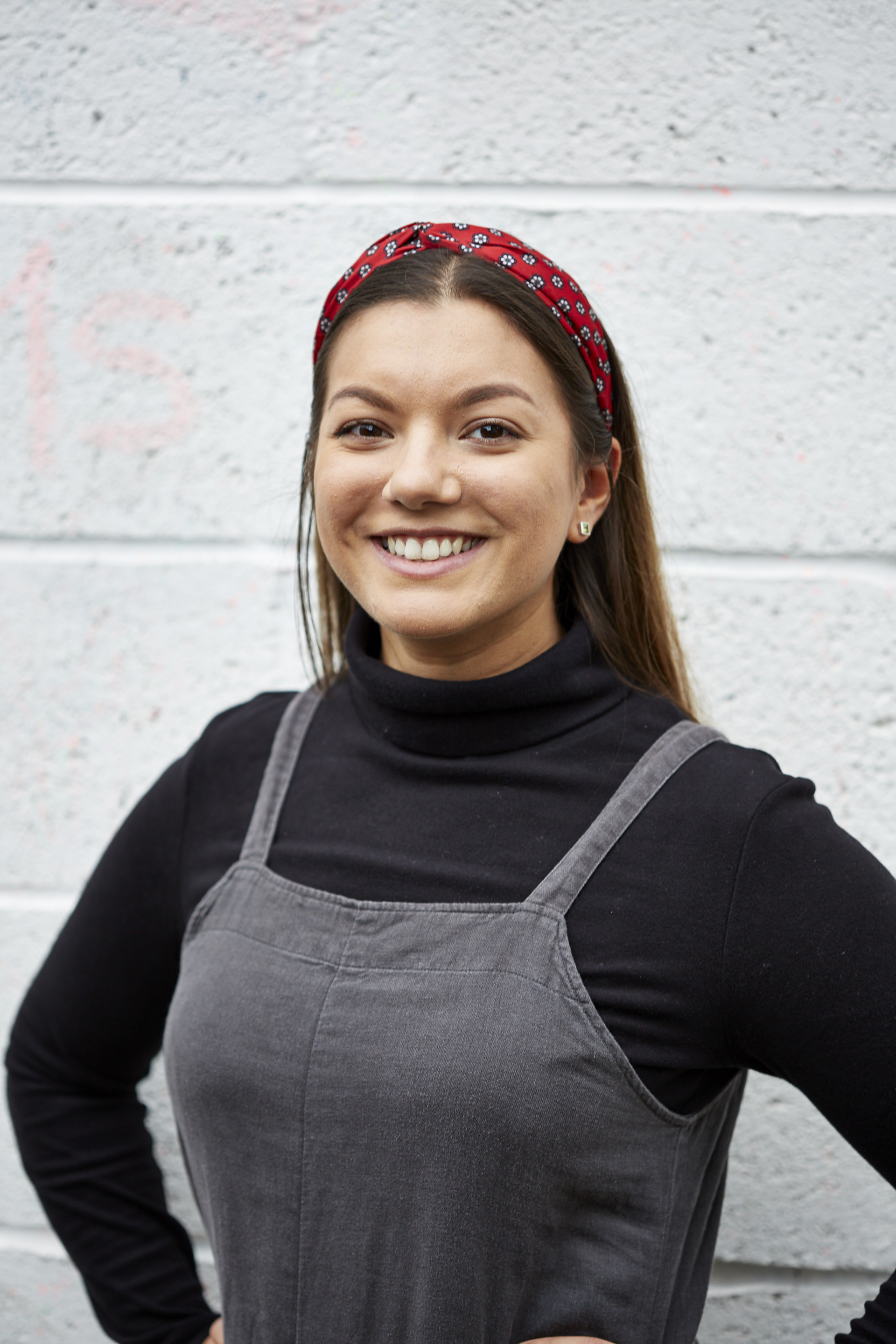The best induction pans to buy in 2025, reviewed by our food team
We took to our professional kitchen to test the best induction pans of 2025, with saucepans, frying pans and sets for every budget
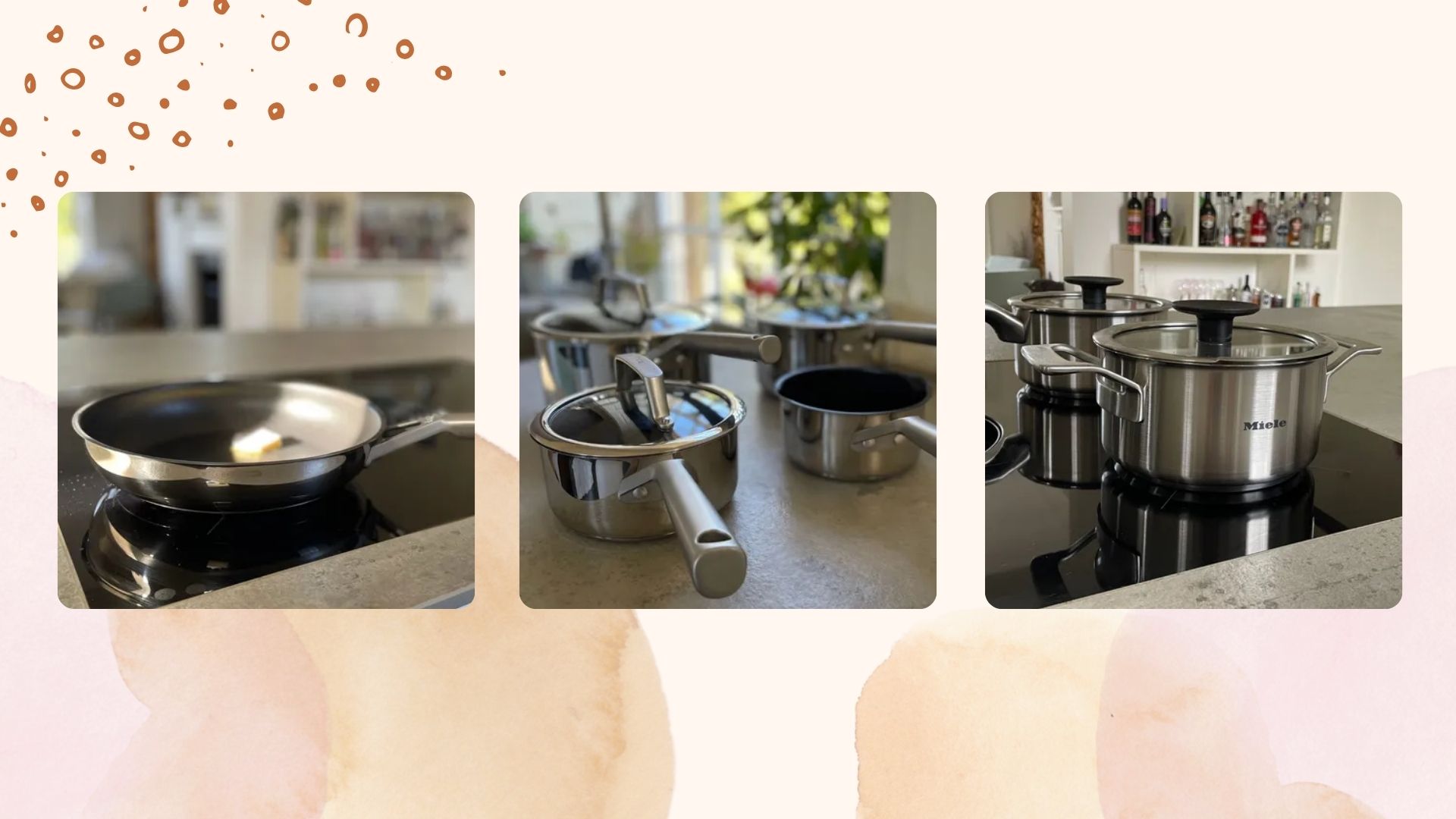

I'm a firm believer in compromise, but not when it comes to the kitchen. The pans that you buy should be objectively the best induction pans around, whether you're cooking on gas, electric, or an induction hob, which is why I've put together this guide
Essentially, what makes a pan induction hob-friendly is having a magnetic base. Lots of pots and pans naturally have this, including cast iron casseroles and all the best stainless steel pans. However, a magnetic base is the bare minimum. An induction pan worth buying should be safe to use (PFOA-free and scratch-resistant), well-built; good value; and stylish too.
Knowing where to start and what to look for might seem overwhelming, but don't worry. You're in safe, cheffy hands. The food team and I work on the best portable induction hobs day in and day out, so we use the induction pans all day every day. I've sizzled, simmered, and sauteed with all the best induction pans and put together this list of the only ones that we'd recommend.
The best induction pans we tested in 2025
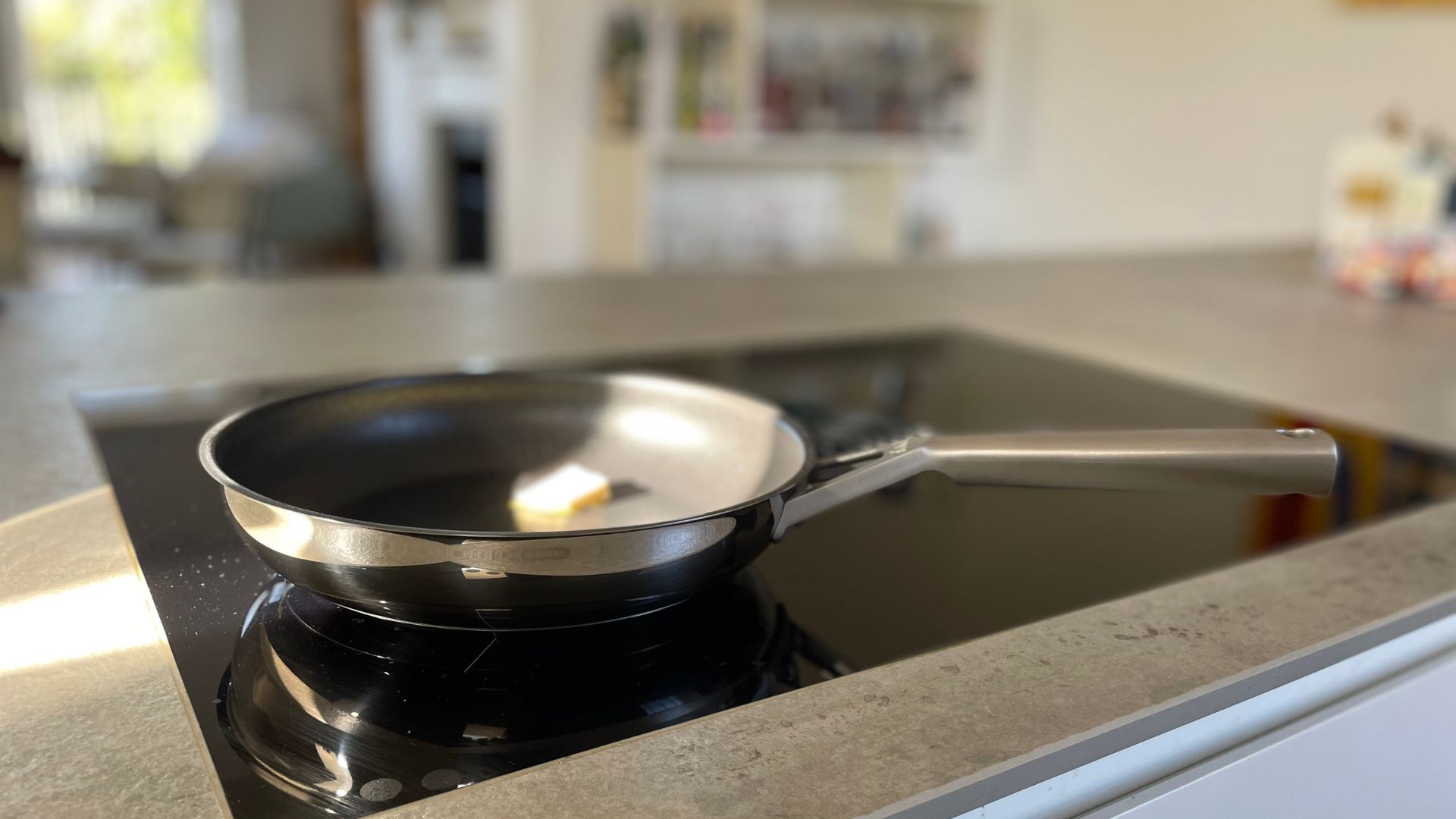
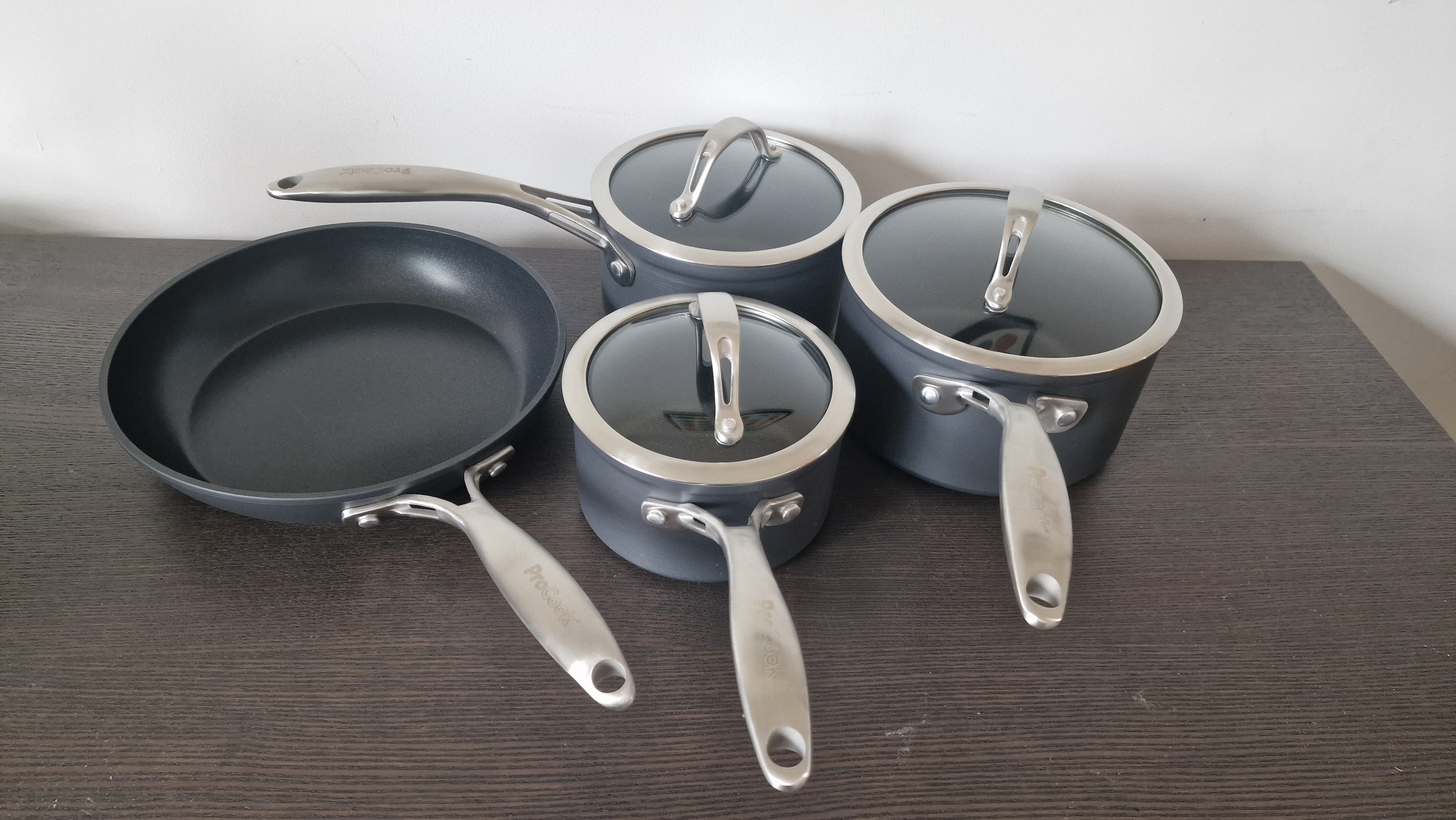
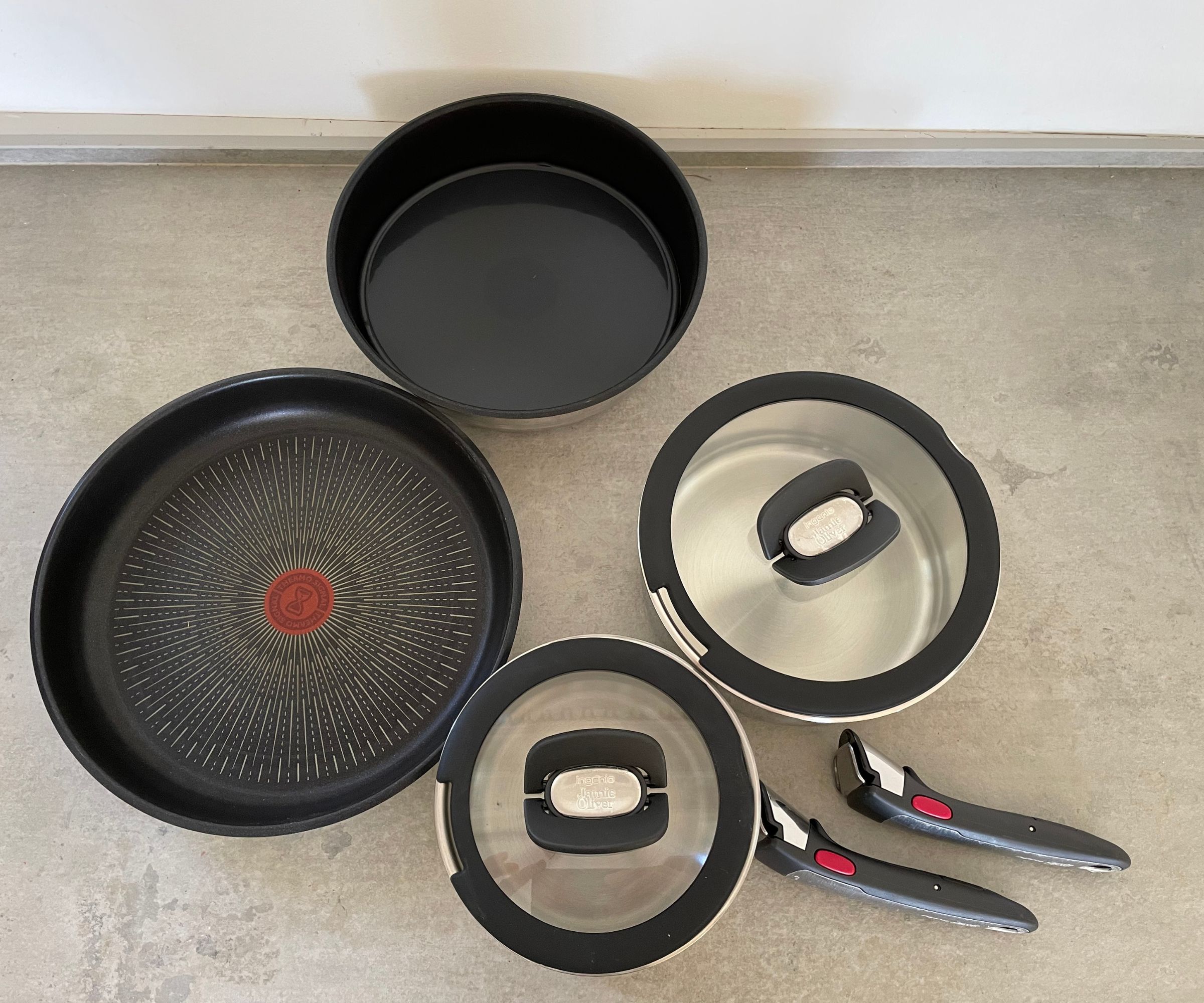
In an induction pan set, every piece needs to offer a different function in your kitchen. We considered how storage-friendly each option was, and while it's not always everyone's preference, we've included non-stick options to make cleaning quick and easy.
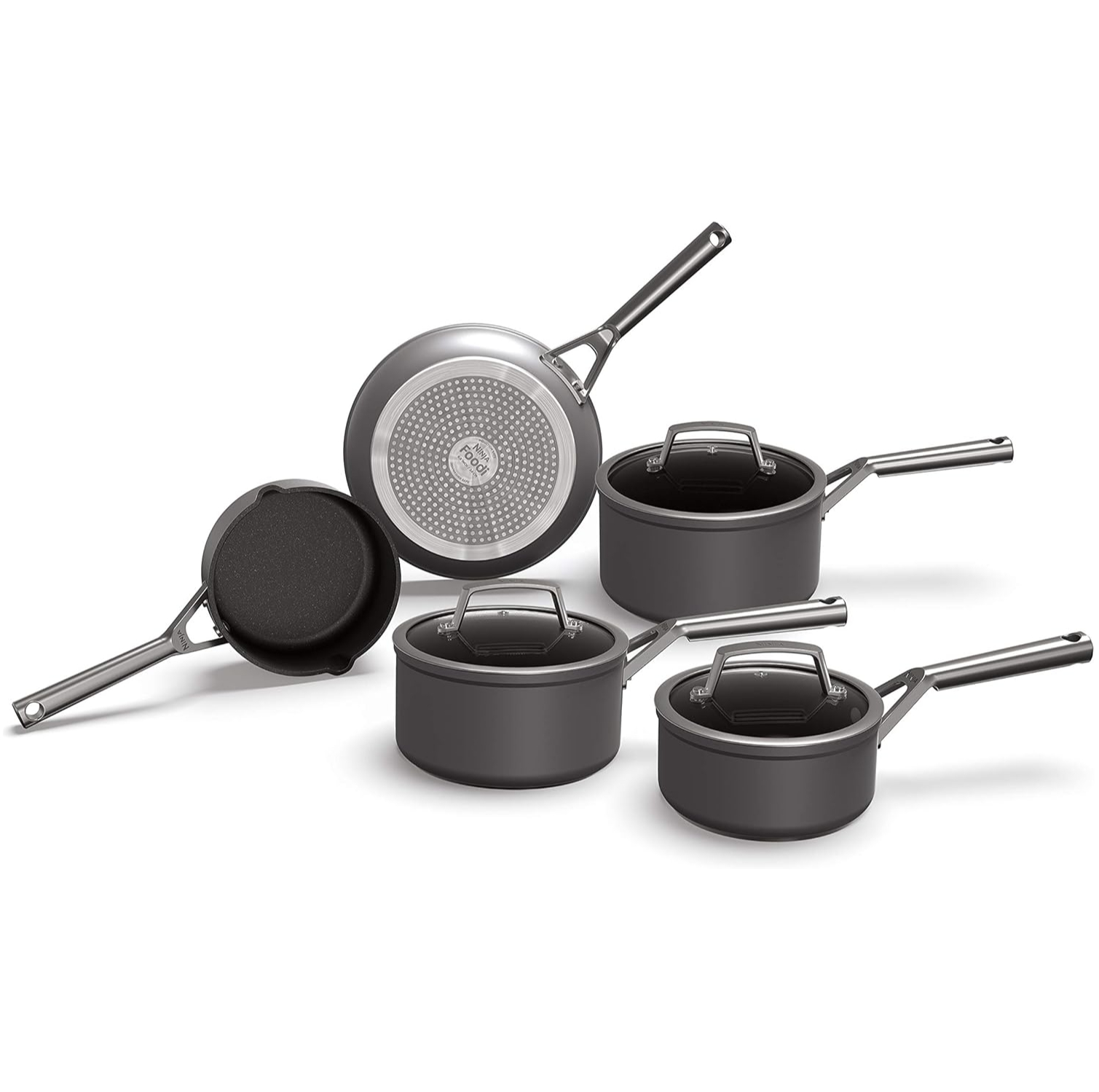
RRP: £219.99 | Materials: aluminium and stainless steel | Size: 16-24cm | Dishwasher-safe? Yes | Oven-safe? Yes - up to 260°C | PFOA-free: yes
Ninja's ZEROSTICK range truly is the market leader when it comes to outstanding quality and durability on a budget. The set even comes with a 10-year guarantee on the non-stick coating. In our testing, the materials heated fast and required next to no oil when frying eggs or making pancakes. Some other brands are more stackable, so you'll just need to make room for these in your cupboards.
See Laura's full Ninja Foodi ZEROSTICK Pan Set review
Reasons to buy: Next-level durability
Reasons to avoid: Not stackable
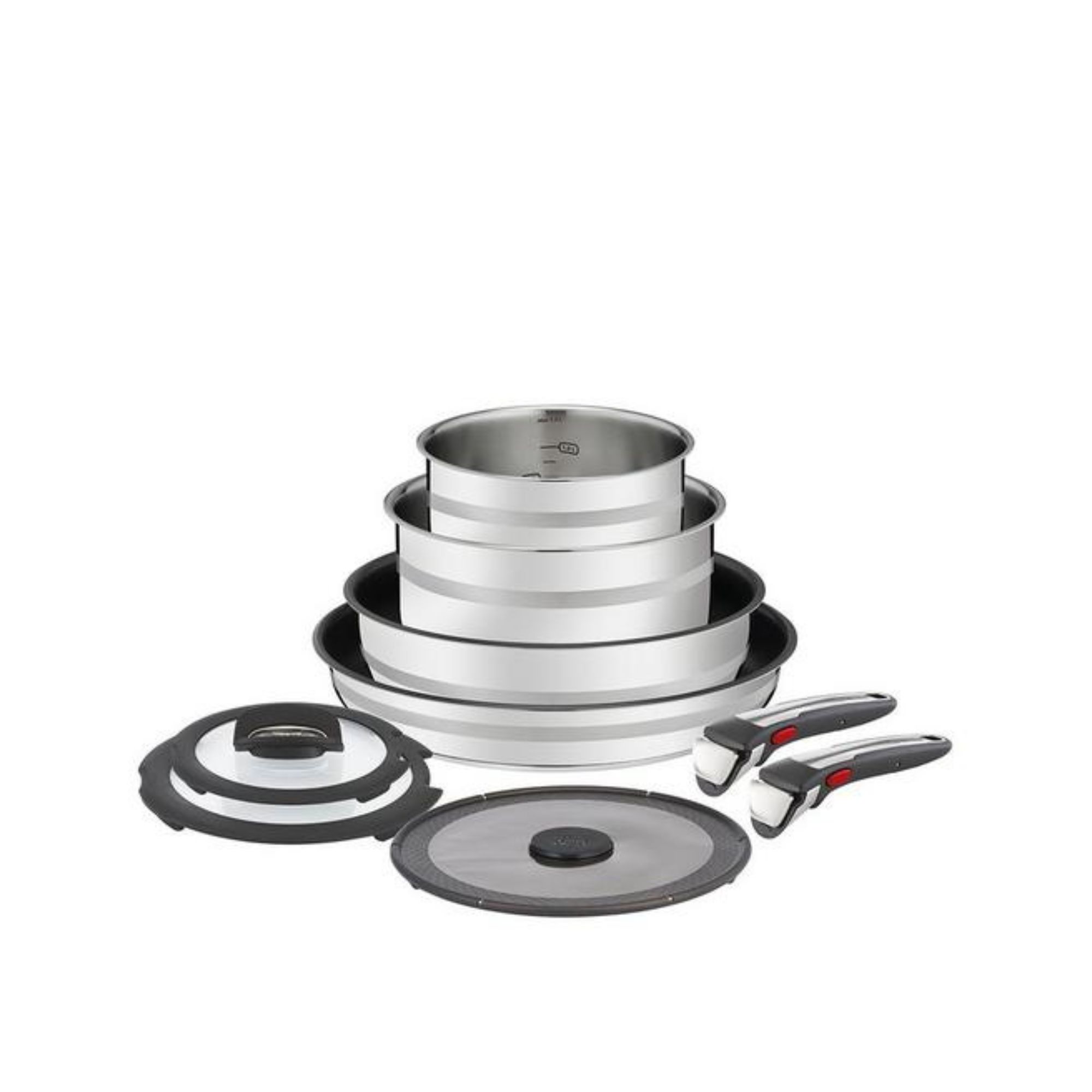
RRP: £320 | Materials: titanium and stainless steel | Size: 16-28cm | Dishwasher-safe? Yes | Oven-safe? Yes, (excluding lids and handles - up to 260°C | PFOA-free: yes
For anyone looking to tidy up their pots and pans cupboard, the Ingenio range from Tefal is a real lifesaver. It’s compact, stackable and provides over 50% space-saving. Although it’s a 9-piece set, that doesn’t mean you get 9 pans. Instead, you’ll find four pans with two handles, two glass lids and a preservation lid. The signature red spot in the centre of the pan turns a solid red when it’s at the optimum temperature. Just note, you can't keep the handles on the pans when they're hot. It's a quirk.
See Laura's full Tefal Jamie Oliver Ingenio collection review
Reasons to buy: Storage-friendly, smart design
Reasons to avoid: Handles can only be used when cool
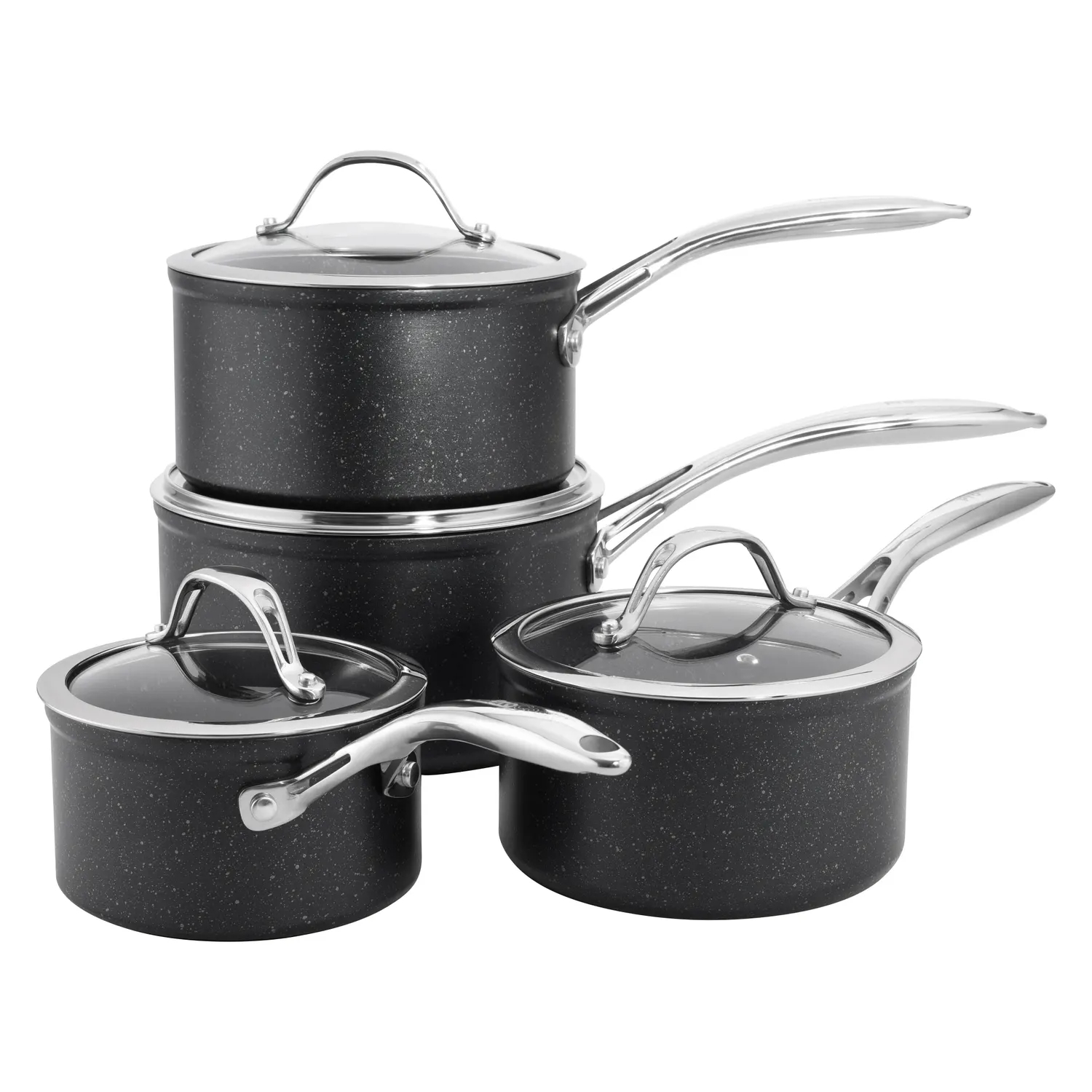
RRP: £239 | Materials: forged aluminium | Size: 14-18cm | Dishwasher-safe? Yes | Oven-safe? Yes, up to 260°C | PFOA-free: yes
The design, durability and quality of this saucepan set is very impressive. They are forged from a single piece of aluminium and have excellent heat distribution and no unwanted rattles on the handles like with cheaper sets. They responded well to changes in temperature on the hob, and the ergonomic handles are Cooltouch, so they don’t heat up. The only downside is that they don't stack.
See Millie's full ProCook Professional Granite Cookware Set review
Reasons to buy: Cooltouch handles, durable design
Reasons to avoid: Requires more storage space than others
The best induction frying pans
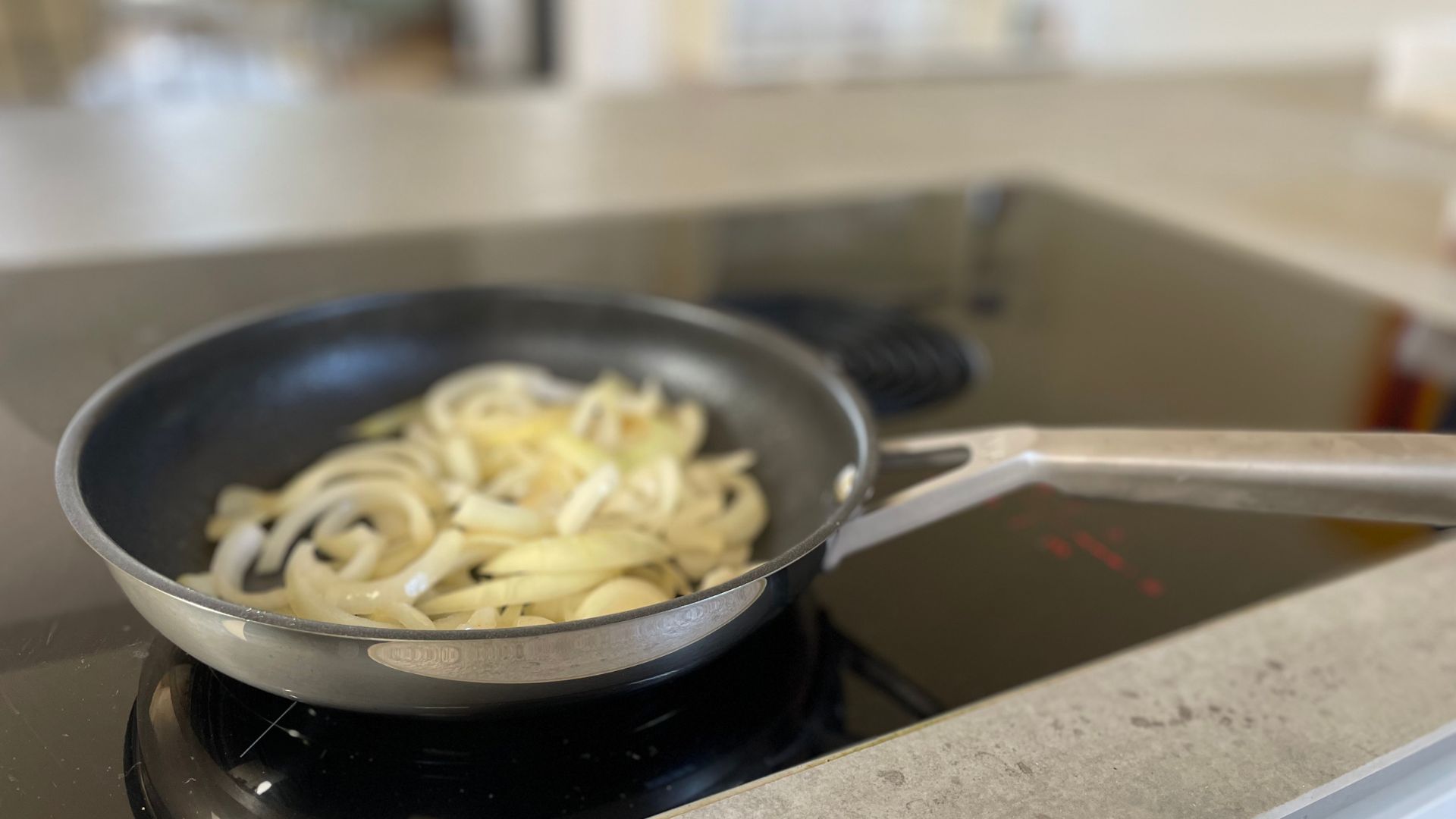
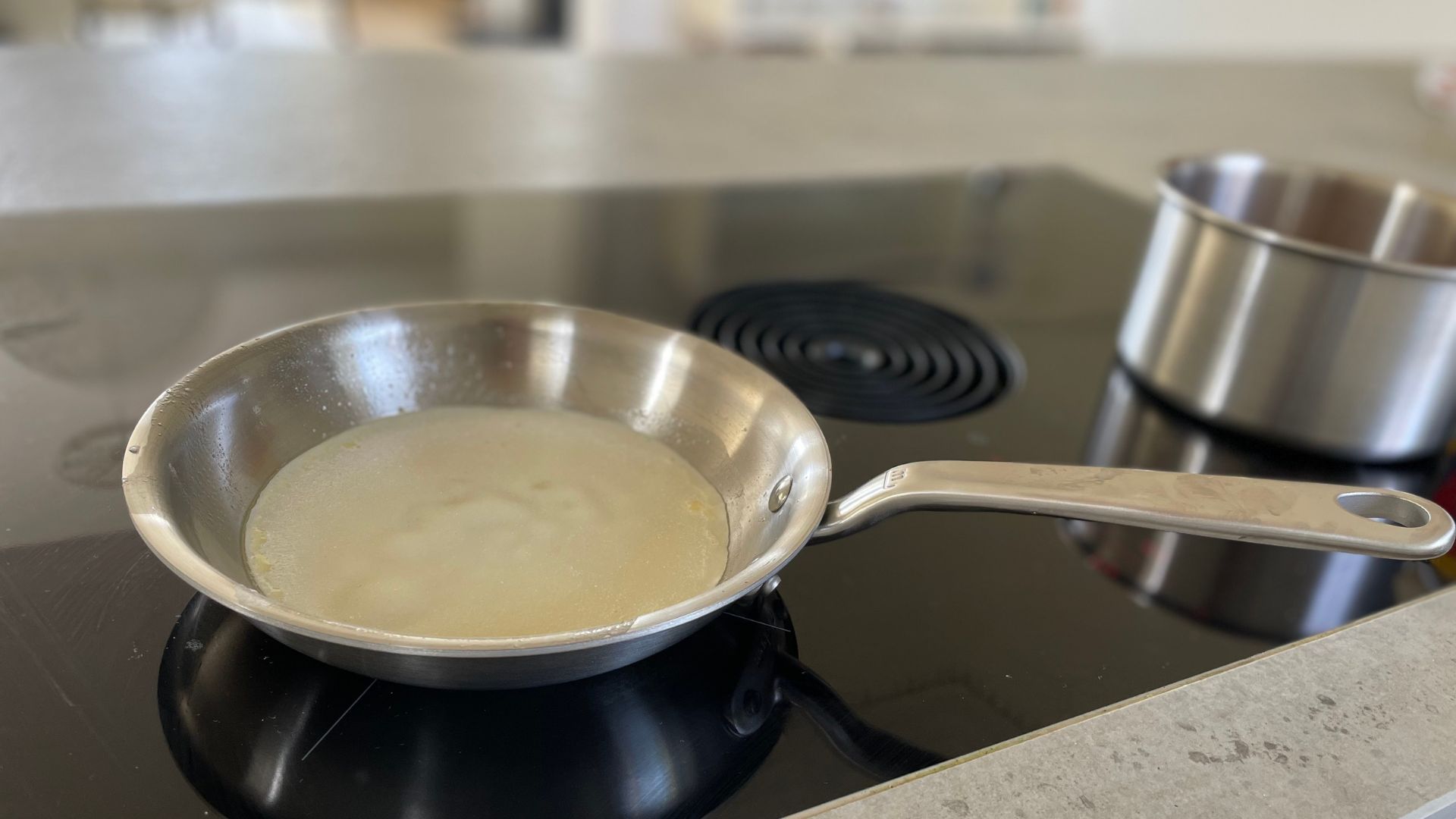
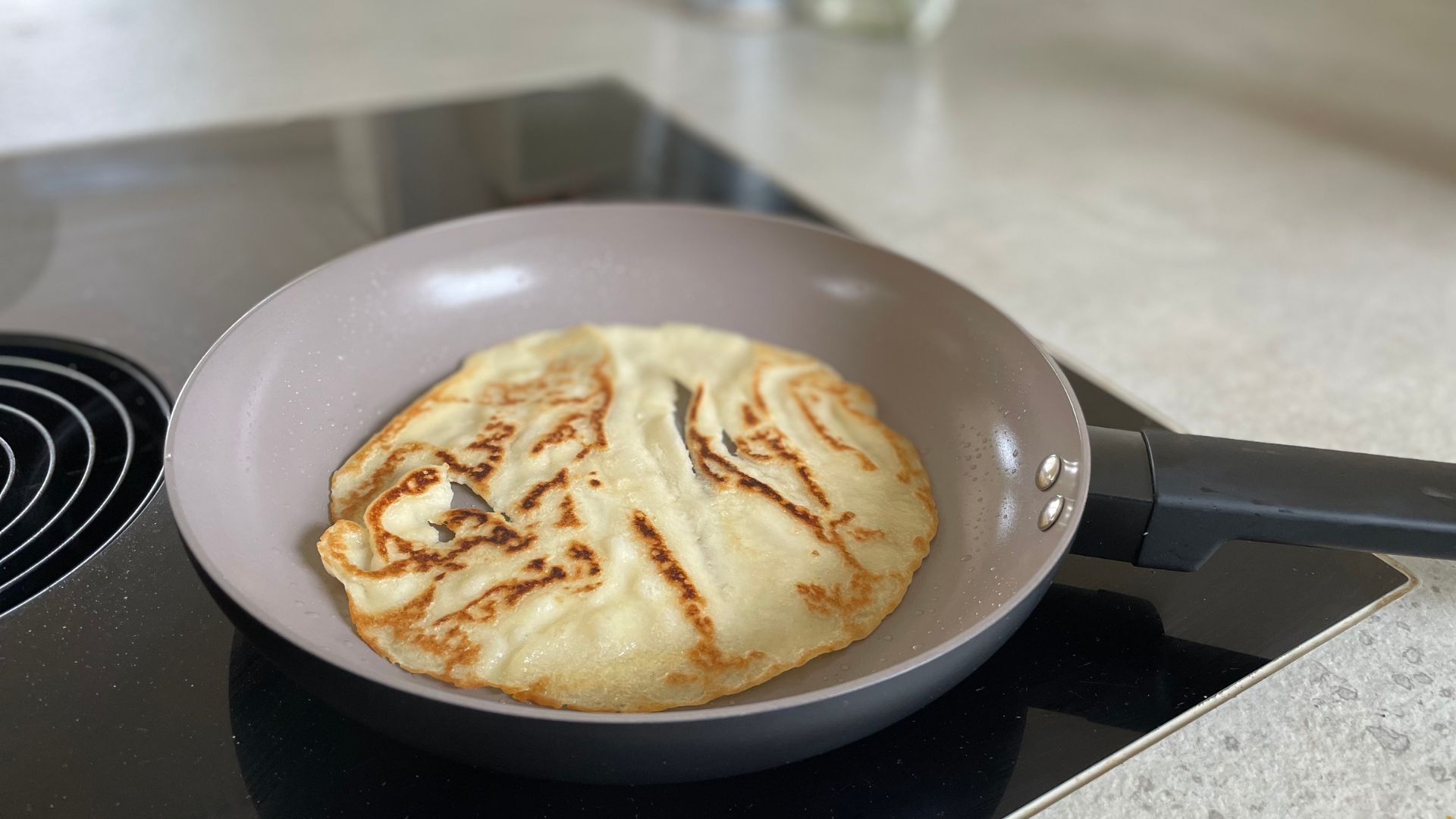
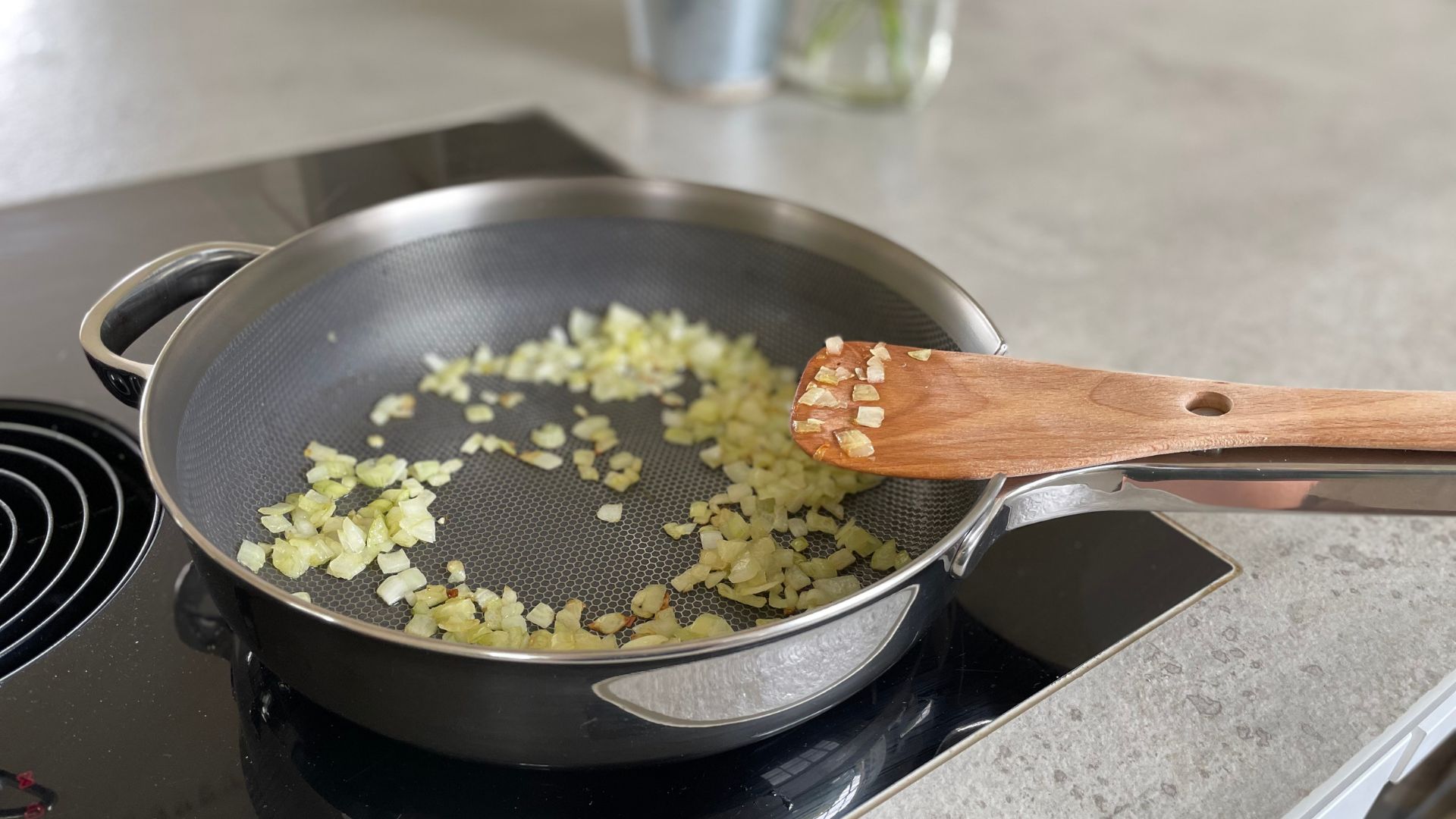
An induction frying pan's number one job is to heat evenly. Ideally, it should be able to come to very high heats quite fast, which will allow you to sear steaks and sizzle bacon without waiting for your pan to come to heat.
All of our top picks have quite high sides, making them immensely versatile for cooking dishes such as risotto, as well as frying off chicken breast. And if it can go straight from the hob to the oven, that's even better.
These three are my favourites, but I have to give a special mention to Joseph Joseph's Foldable Frying Pan which can neatly tuck the handle inside the pan. It's a brilliant storage-saving option.
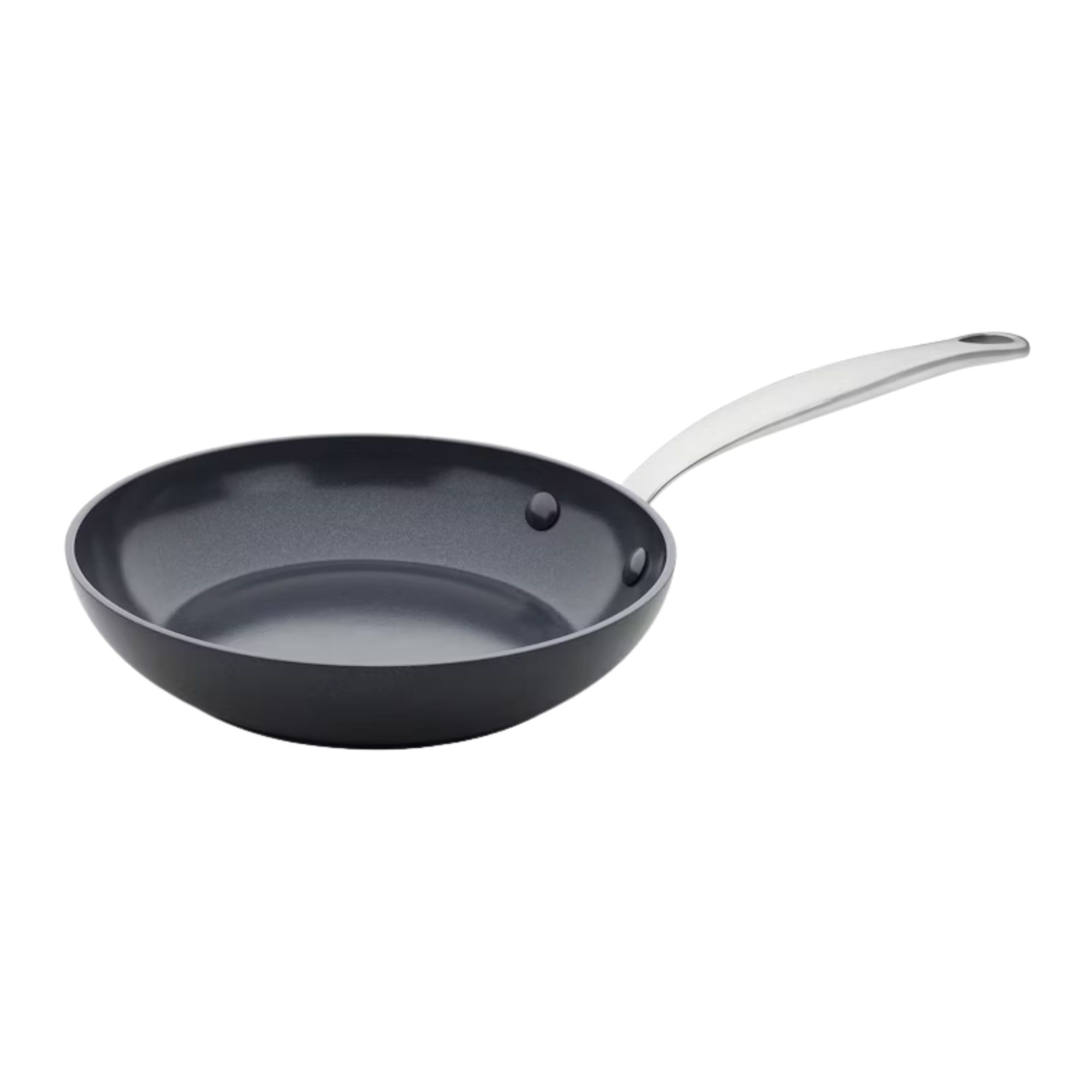
RRP: £69.99 | Materials: forged aluminium and ceramic | Size: 20-30cm | Dishwasher-safe? Yes | Oven-safe? Yes | PFOA-free: Yes
We put this ceramic pan through some vigorous testing using stainless steel utensils to see if it held up to the claims of 'extreme scratch-resistant cooking' – and we can confirm it really did. Not only is the surface supremely scratch resistant but it's incredibly non-stick and therefore feels like a healthy pan to choose for frying foods – because very little oil was required. Just make sure you have a wide drawer because the handle is quite long.
See our full Greenpan Barcelona review
Reasons to buy: Incredibly durable
Reasons to avoid: Requires a lot of storage space
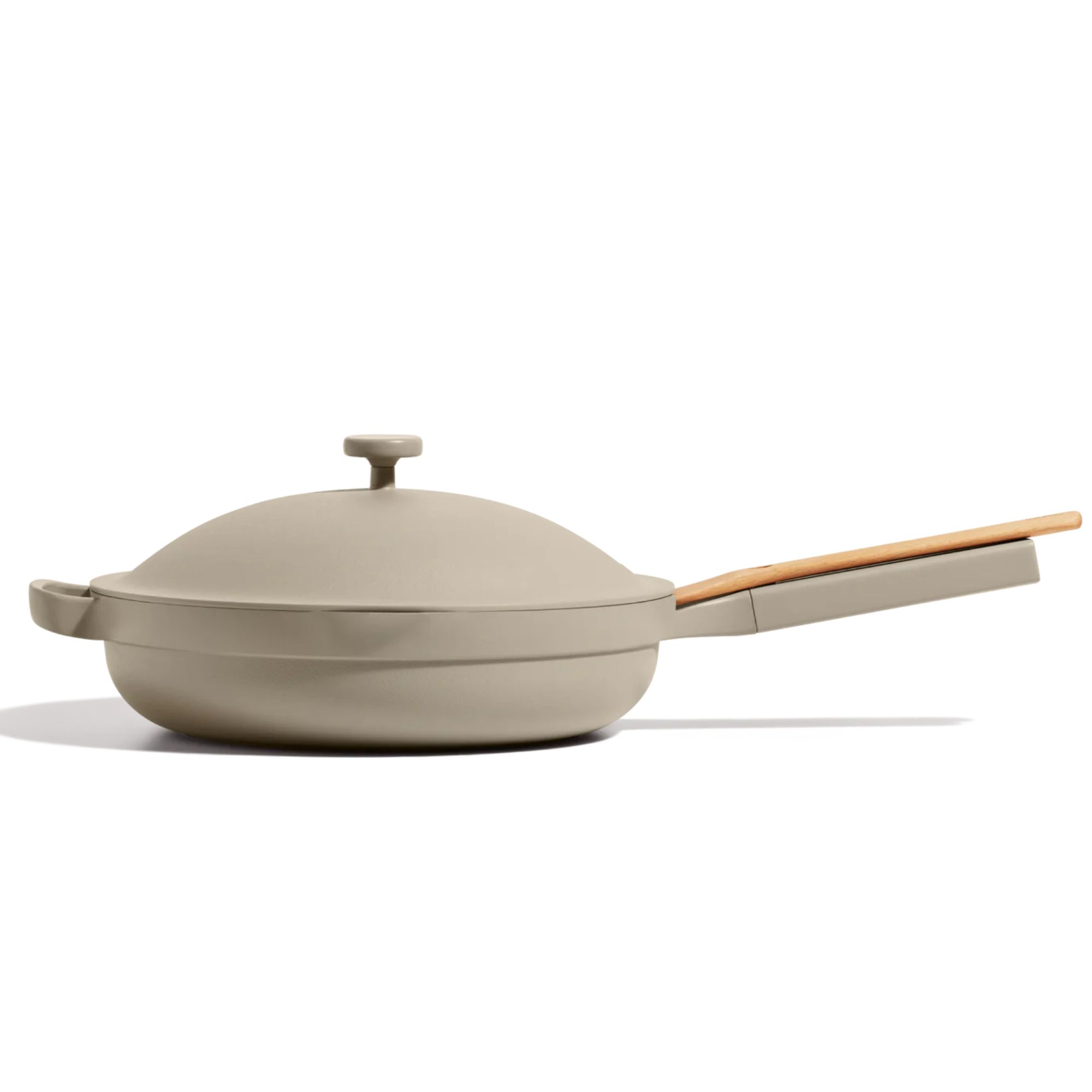
RRP: £130 | Materials: forged aluminium and ceramic | Size: 21-27cm | Dishwasher safe? No, hand wash only | Oven safe? Yes | PFOA-free: yes
This pan certainly lives up to the hype. Available in a range of eight different colours, it's undeniably chic. Aside from being a fantastic induction frying pan, it has multiple other uses too – such as steaming, straining, boiling, and serving, meaning you can enjoy eight uses in one pan. In our tests, it was faultless, you just need to set some time aside for hand washing, as this can't go in the dishwasher.
See our full Our Place Always Pan review
Reasons to buy: A true multi-tasker
Reasons to avoid: Not dishwasher-safe
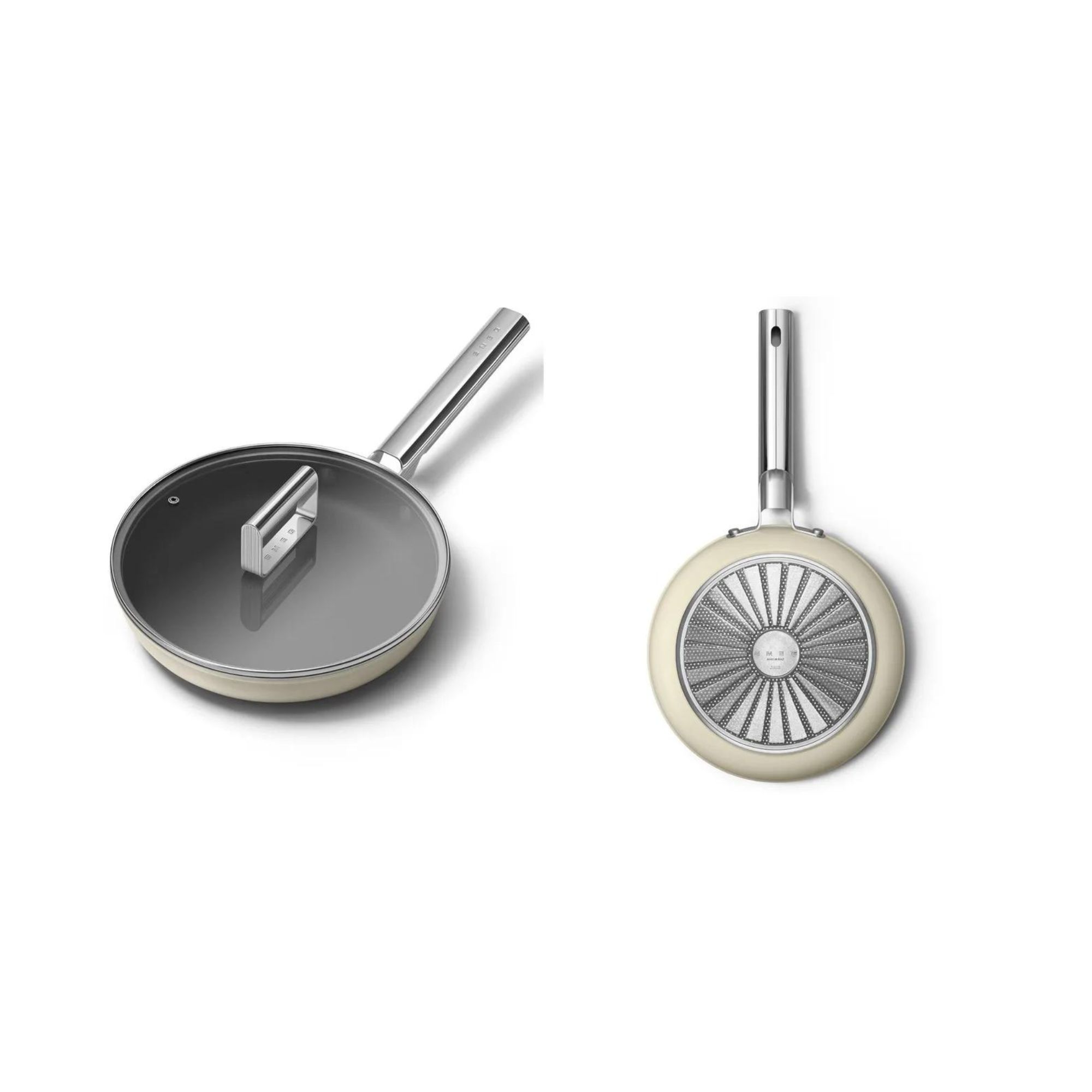
RRP: £109 | Materials: forged aluminium | Size: 20-30cm | Dishwasher safe? Yes | Oven safe? Yes | PFOA-free: yes
If you're looking for a stylish pan, this retro 50's style Smeg pan – which is induction compatible – is a fabulous pick. The pan has a patterned, ridged base, which means it’s very sturdy on the hob and doesn’t wobble at all. The large surface area and elevated sides of the height also mean that, despite looking on the smaller side, we could cook large quantities of bigger dishes like risotto with ease. The only downside is that it's a little heavier than most, so have your wrists ready.
See Laura's full Smeg Frying Pan review.
Reasons to buy: Looks great, and cooks well too
Reasons to avoid: Quite hefty
The best induction saucepans
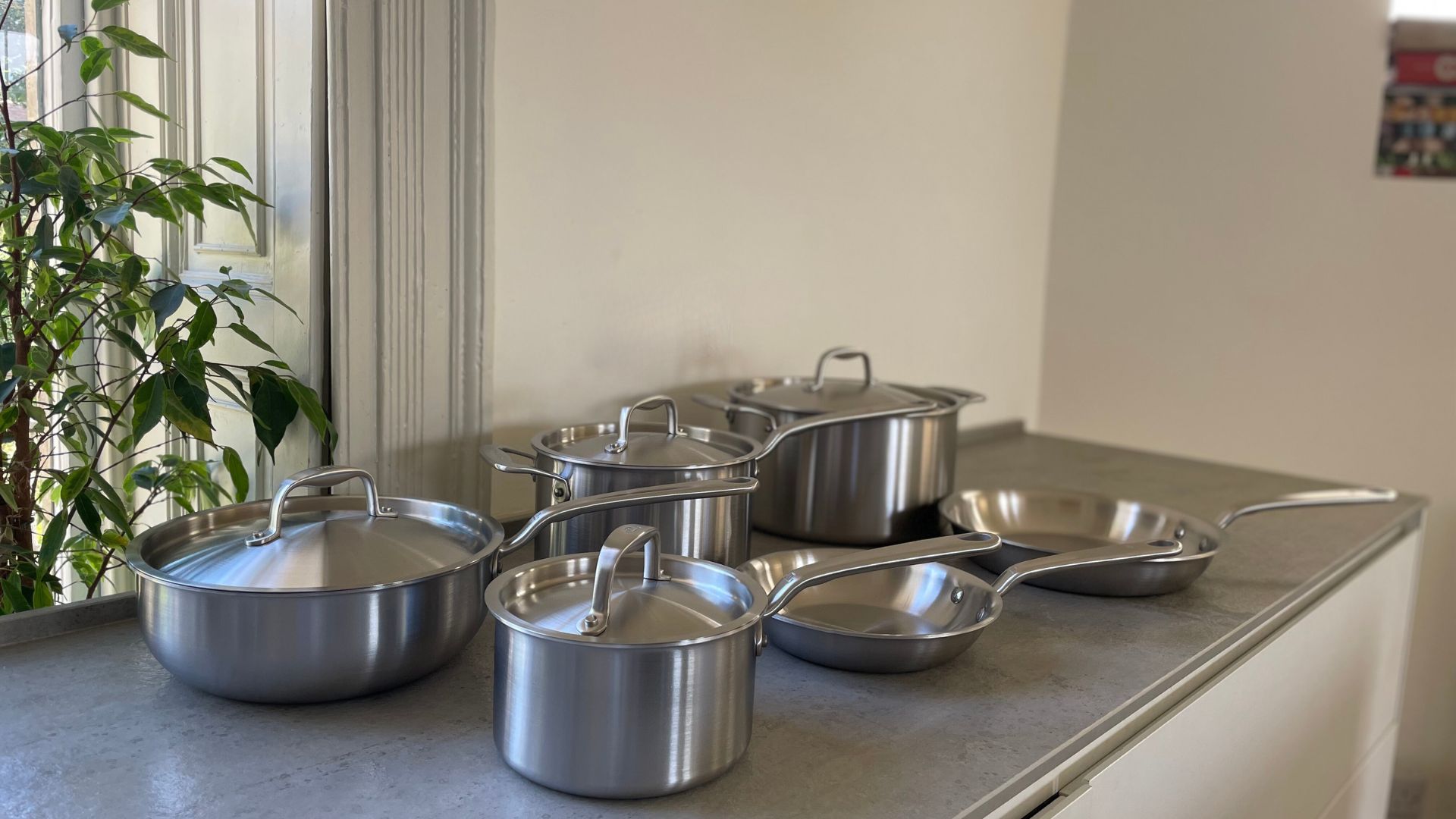
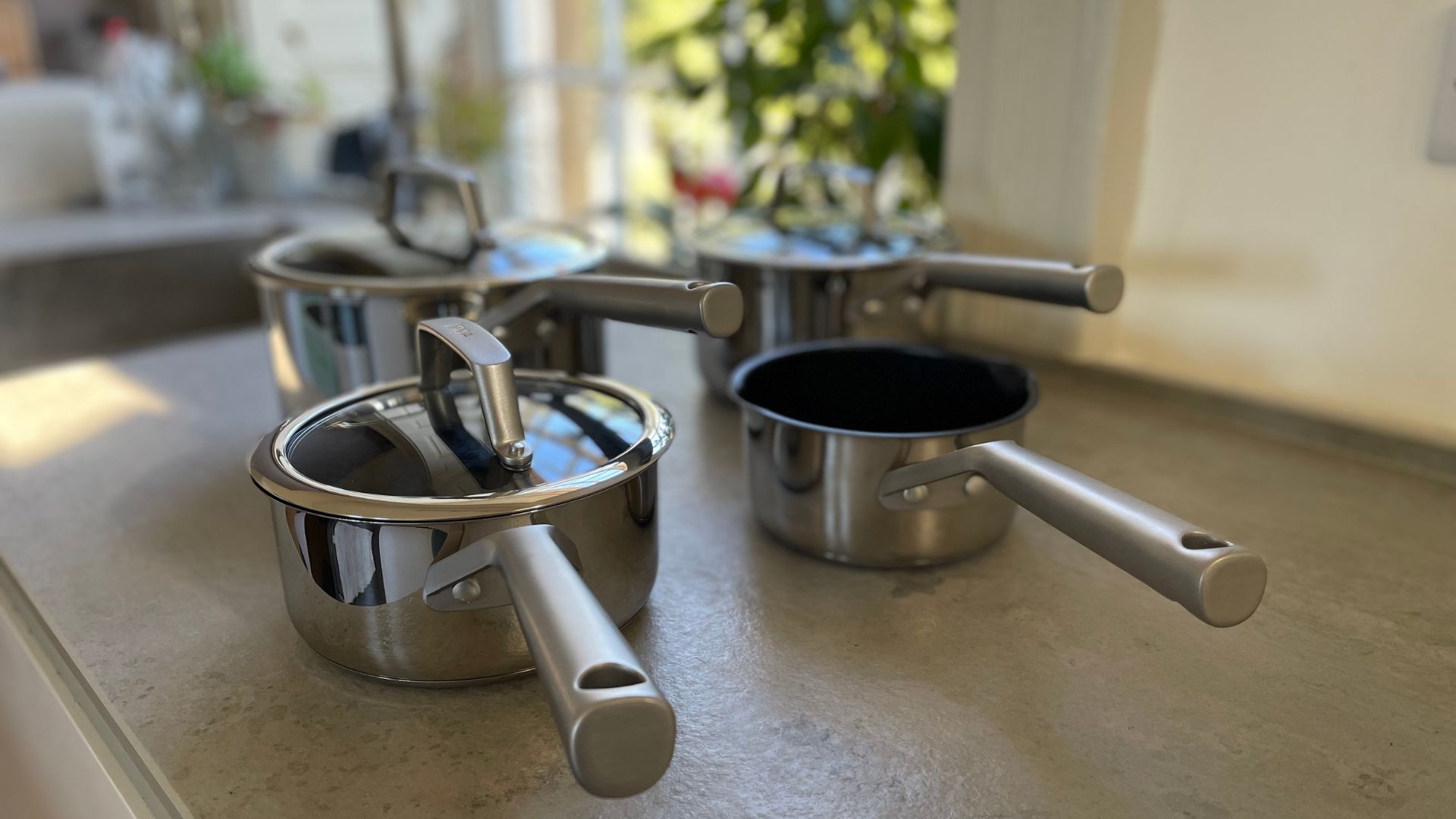
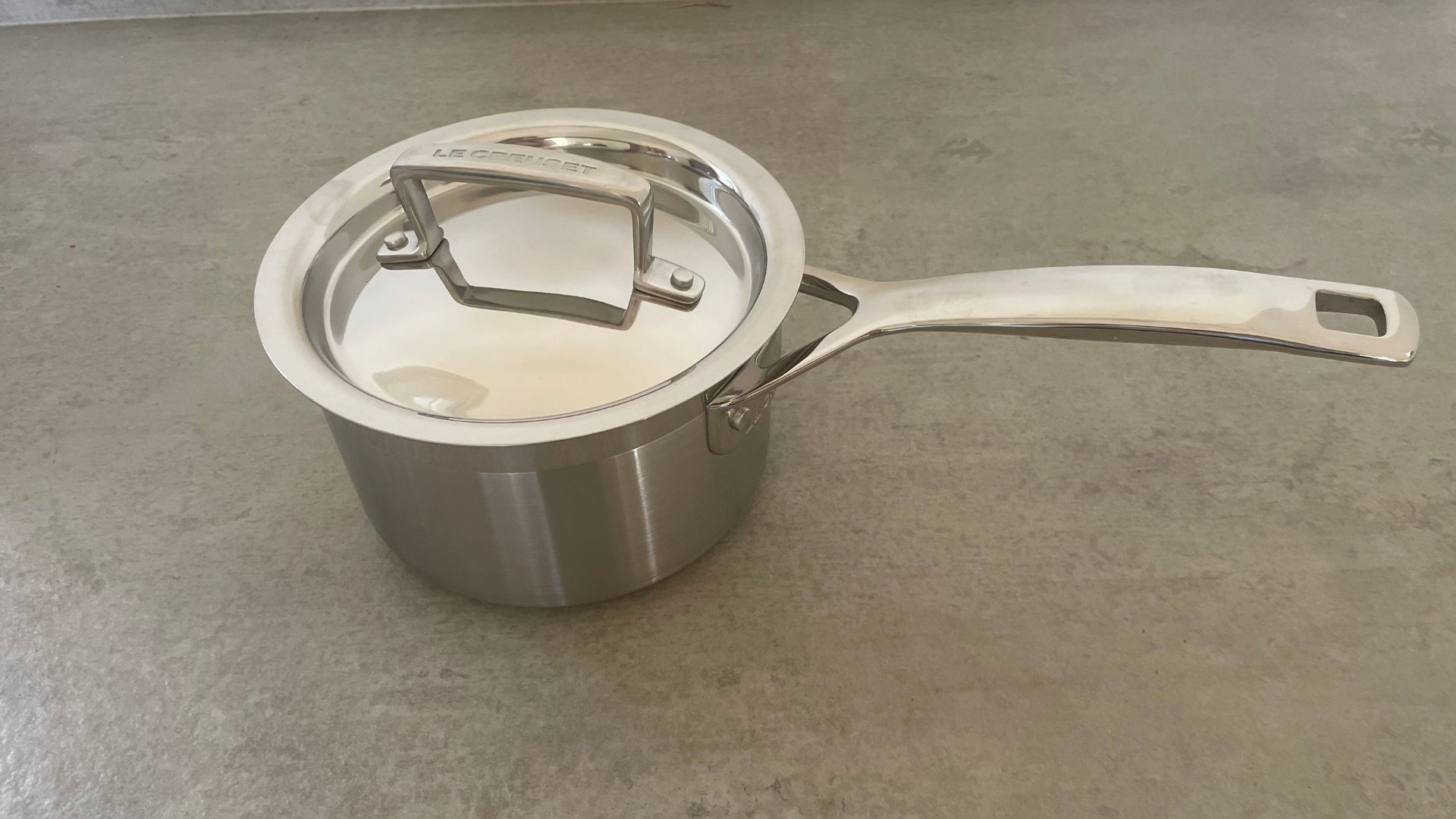
The workhorse of the kitchen, your saucepan should be able to heat evenly, with a handle that remains cool even while your pasta or sauce bubbles away. Because induction hobs only heat the metal that comes into direct contact with it, this should be a lot easier than using a saucepan on a gas stove, and you also have more flexibility with the size of the pan you'd like to use.
These pans need to be responsive to fast temperature changes, because an induction hob is a lot more effective at heating liquids fast than a traditional hob. In our testing, we tried them out at a number of heats.
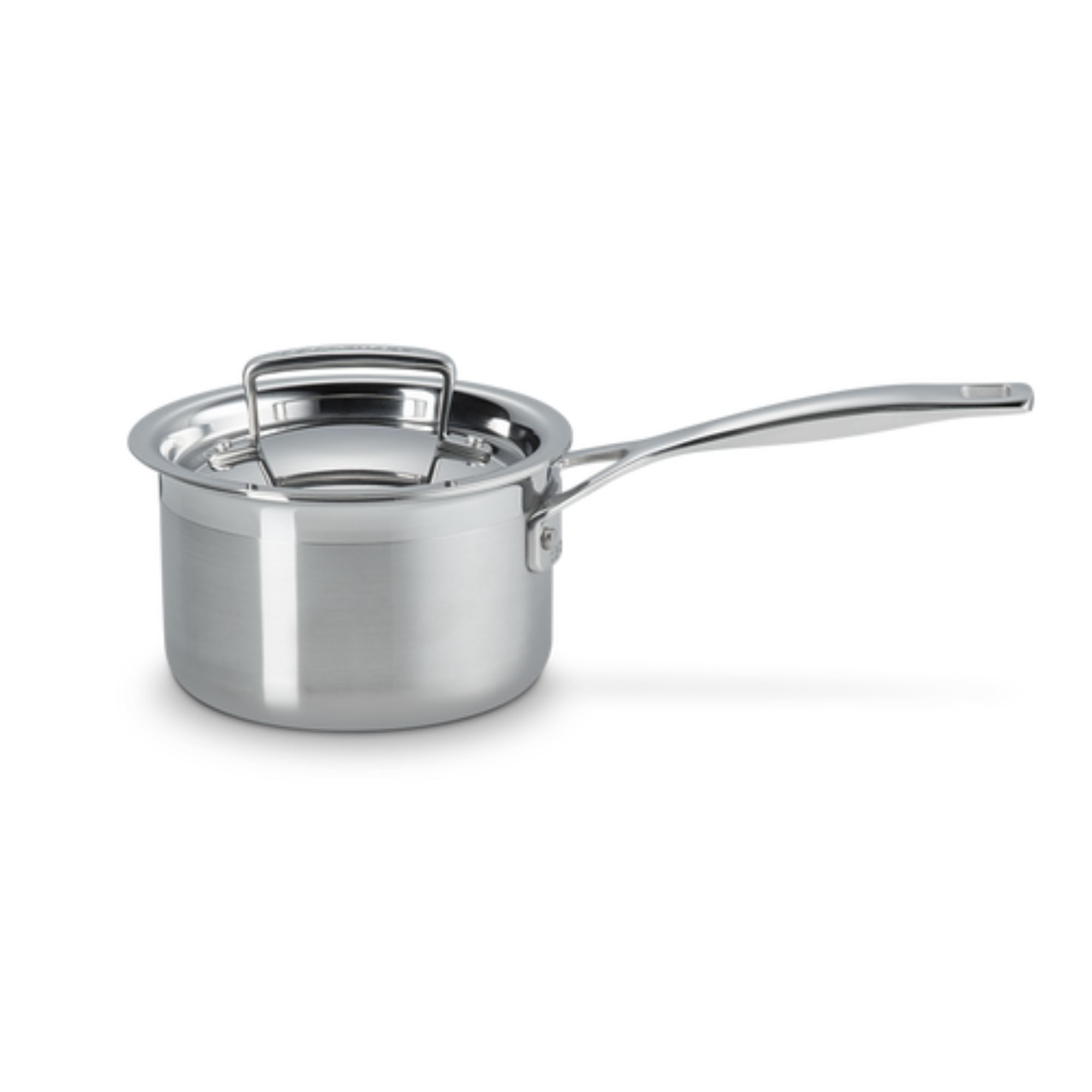
RRP: From £155 | Materials: stainless steel | Size: 14-20cm | Dishwasher safe? Yes | Oven safe? Yes | PFOA-free: yes
This 14cm pan was the speediest of all the saucepans we tested to come to a boil and responded excellently to changes in temperature on the induction hob. There's even an internal measuring guide, which is helpful when pouring in liquids. Everything sits and fits perfectly, so it feels like a quality pan, even though it's on the pricy side.
See Rosie's full Le Creuset Stainless Steel pan review
Reasons to buy: Outstanding quality
Reasons to avoid: It's a lot to spend on one saucepan
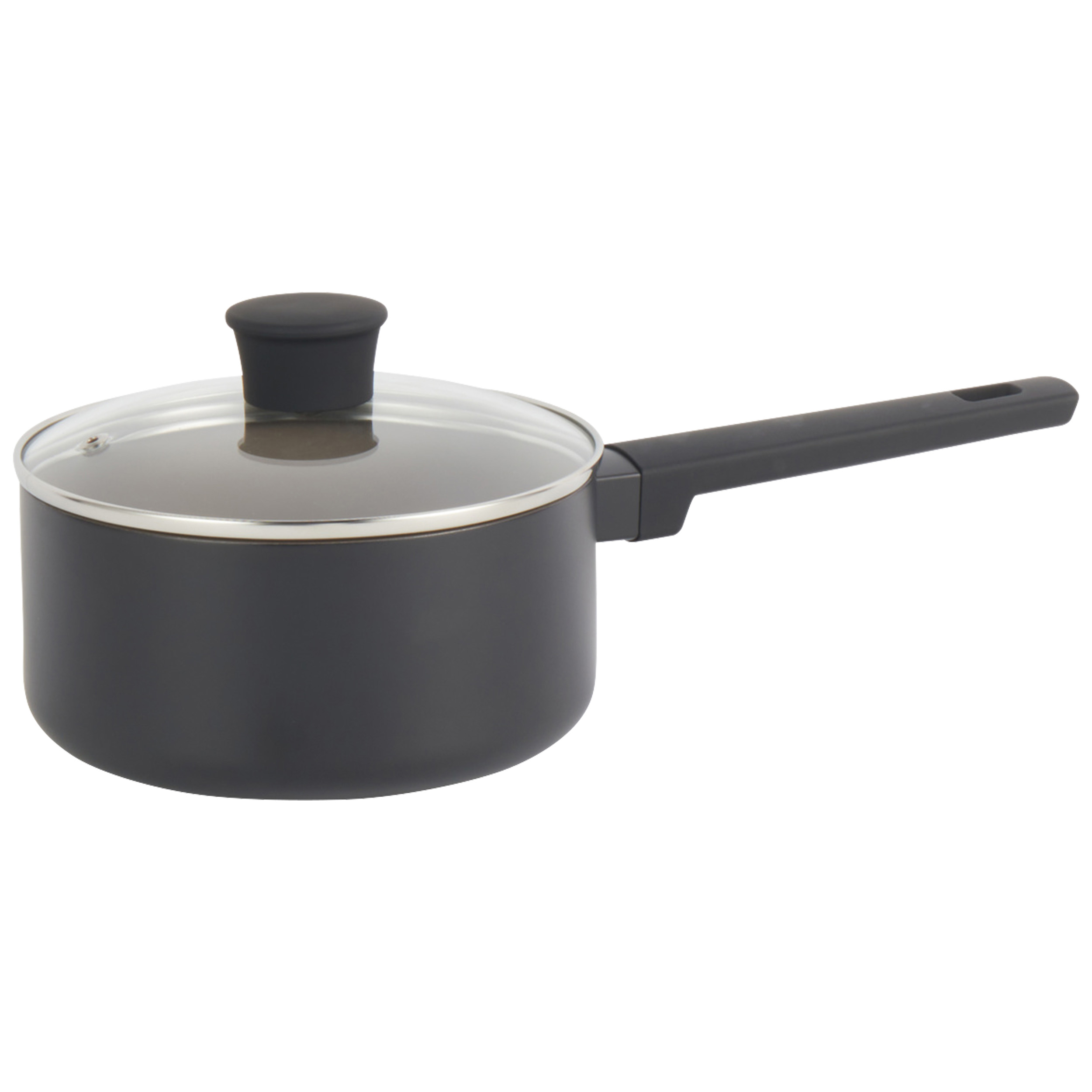
RRP: £17.99 | Materials: forged aluminium and non-stick | Size: 16-28cm | Dishwasher safe? No | Oven safe? No | PFOA-free: yes
This is available in a range of sizes (helpful for kitting out your kitchen), but that's not why these made the cut. The special Megastone coating keeps this non-stick without adding any nasty chemicals in the mix. I actively tried to burn my dishes in here and I couldn't - it really is that good. Just remember that it can't go in the dishwasher.
See Laura's full Salter Megastone Pan Set review
Reasons to buy: Really effective non-stick
Reasons to avoid: Not dishwasher safe
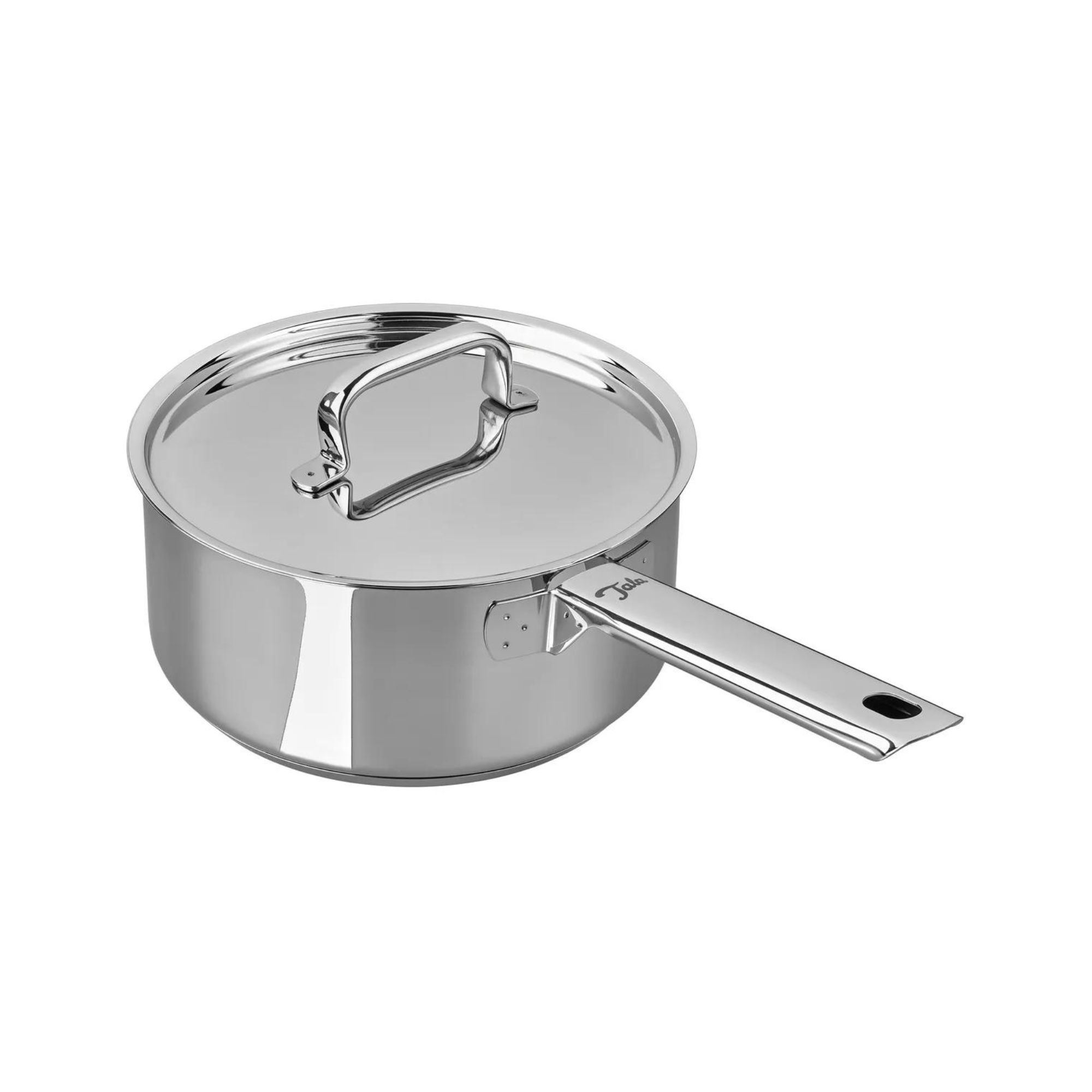
RRP: £105 | Materials: stainless steel | Size: 16-20cm | Dishwasher safe? Yes | Oven safe? Yes | PFOA-free: yes
This pan is super generous generous. At first look it feels relatively small but in fact, it was able to cook vast amounts. We put the weight down to quality because the base features an impact-bonded design to make it suitable for induction hobs to offer even heat distribution. Just watch the lid, which will heat up with use.
Reasons to buy: Great capacity, high quality
Reasons to avoid: Metal lid will heat up with use
The best induction cast iron pots and pans
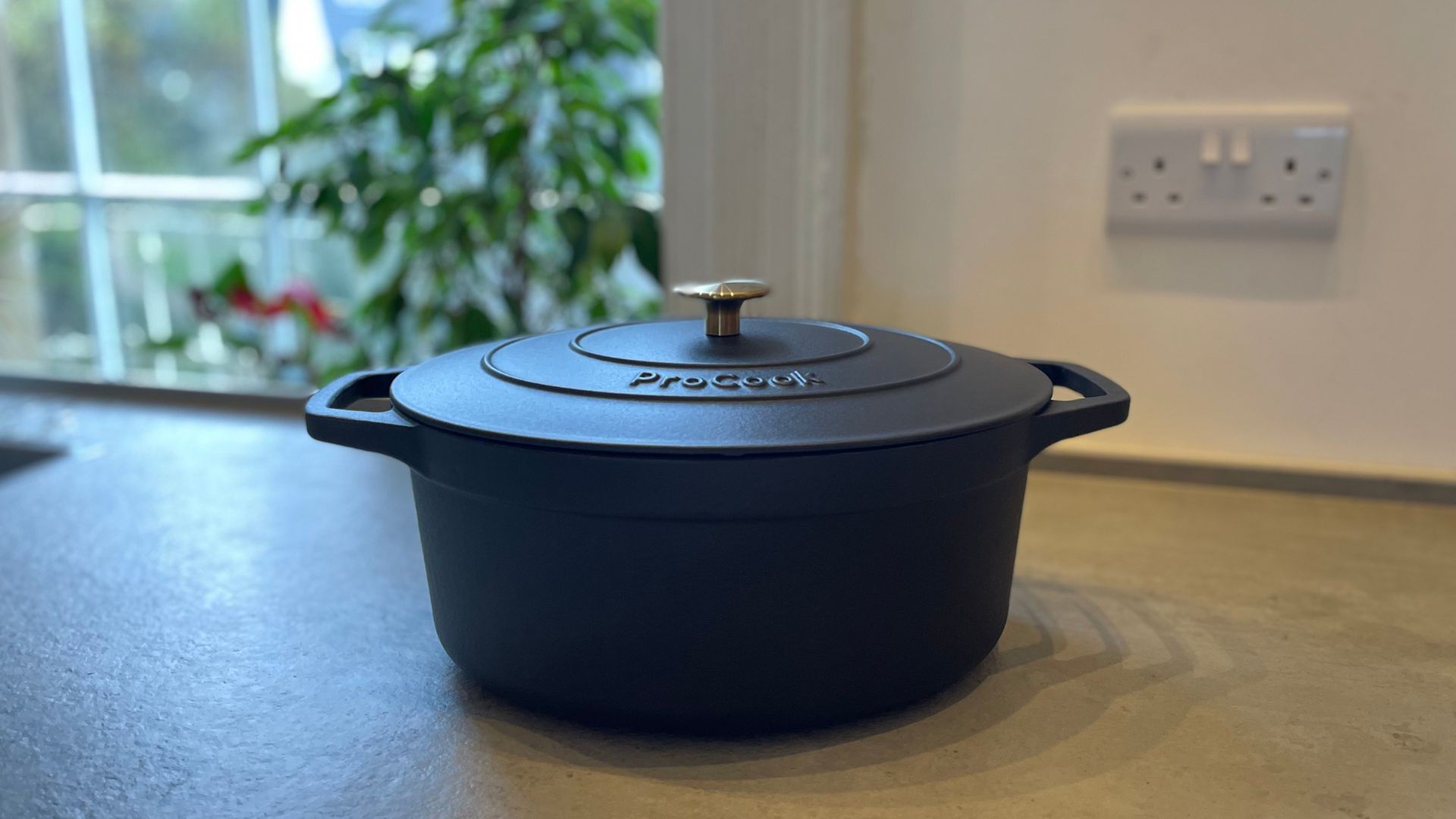
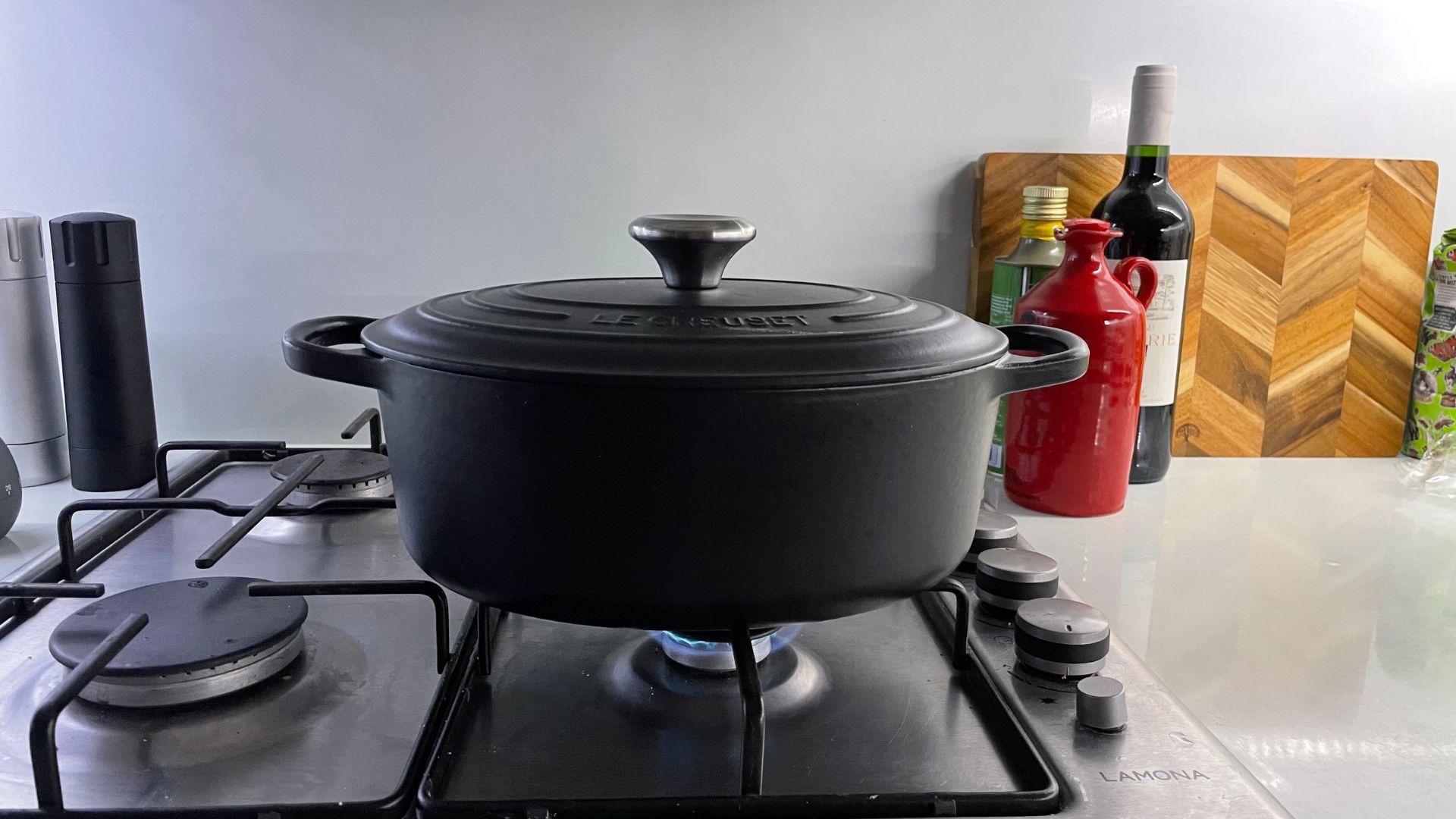
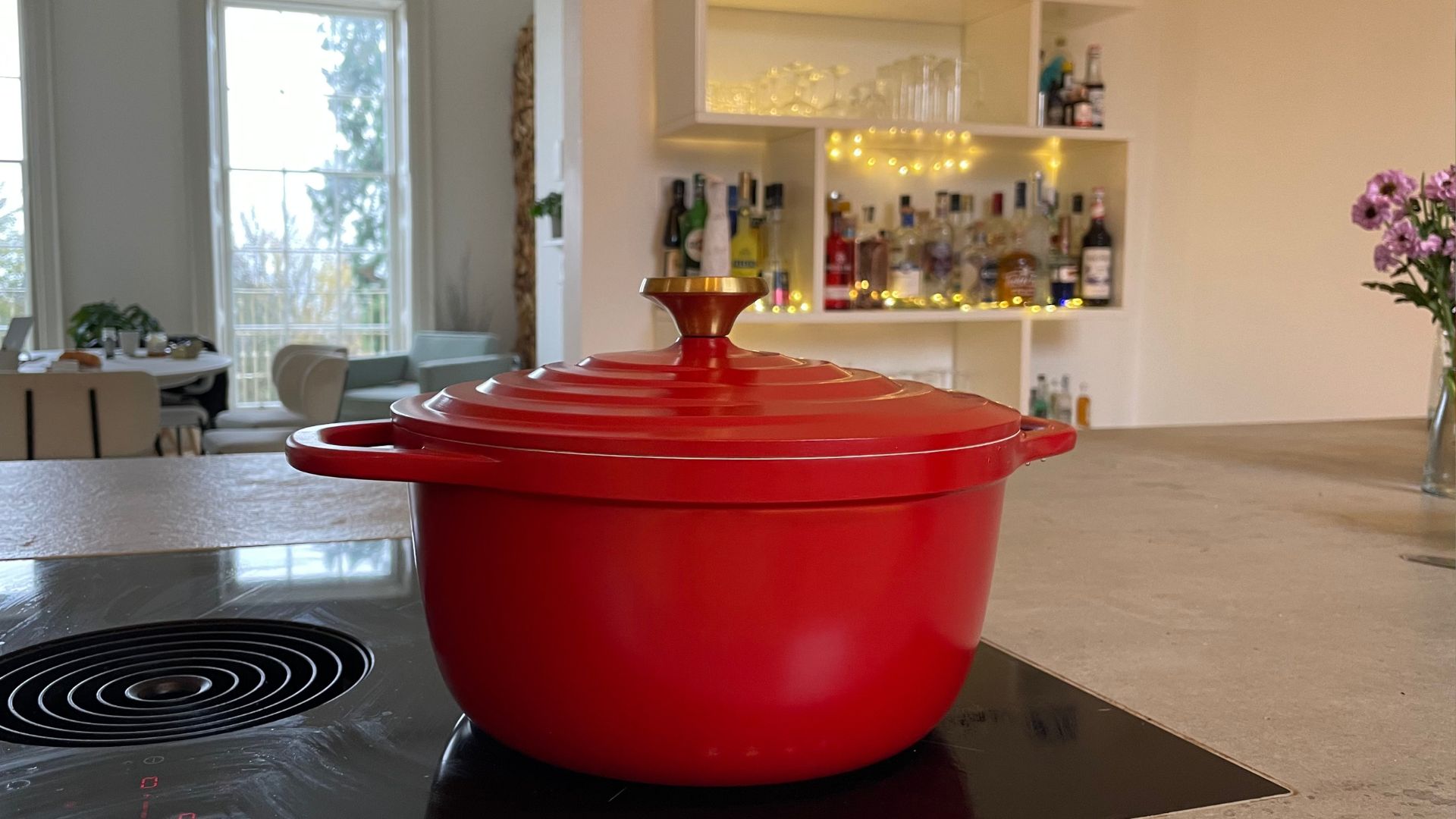
Calling this section 'induction cast iron' is tautology; all quality cast iron is induction safe. I've put it in here, because lots of people don't realise that they can use their casserole dishes on the hob and so they lose out on a whole dimension of versatility. I've worked my way through a whole range of cast iron and here are my top three suggestions:
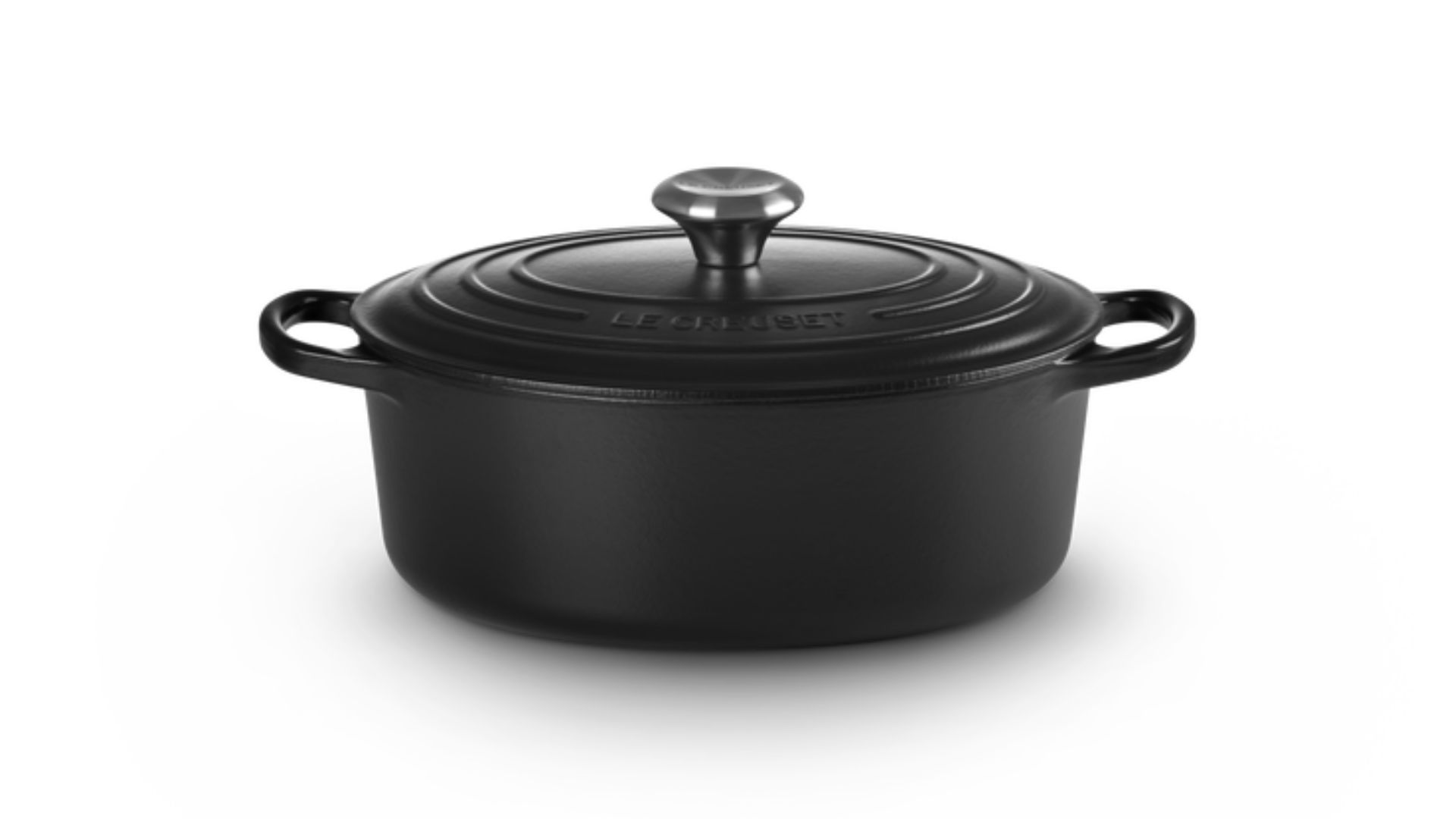
RRP: £167-399 | Materials: cast iron | Size: 18-30cm | Dishwasher safe? Yes, but hand wash recommended | Oven safe? Yes | PFOA-free: yes
Nobody does cast iron quite like Le Creuset. Their iconic casserole dishes, also known as Dutch ovens, can go in the oven, on the stove, or just on display. You can't beat the quality or performance of this; it's flawless.
You can read more in Laura's full Le Creuset Cast Iron review.
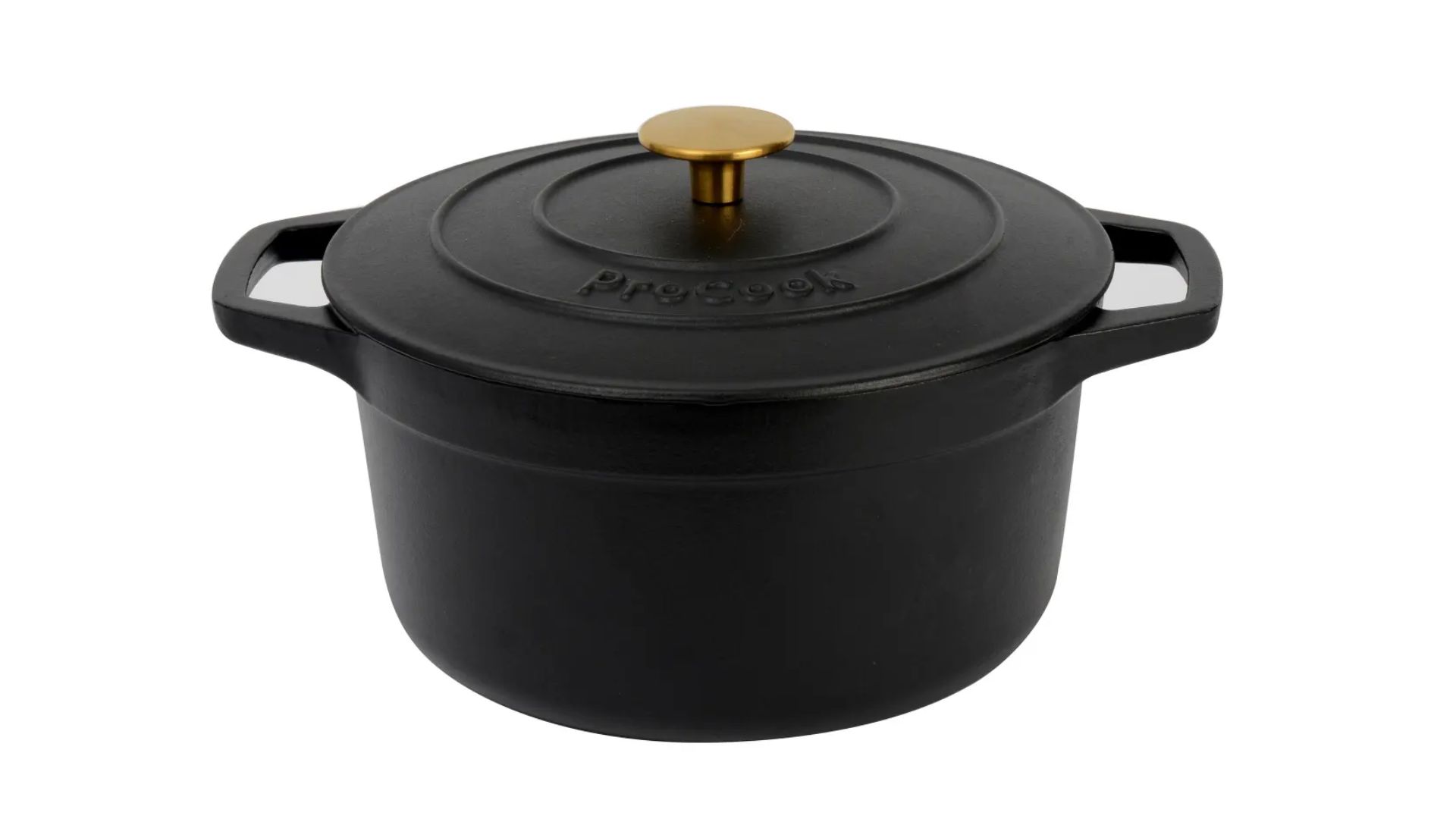
RRP: £55-75 | Materials: cast iron | Size: 12-30cm | Dishwasher safe? Yes | Oven safe? Yes | PFOA-free: yes
ProCook's cast iron looks and feels just like Le Creuset, except for the branding. These are available in a range of colours and the matte finish looks premium too. I found it heated quickly and evenly, making it perfect for all my soups and stews.
You can read more in Laura's full ProCook Cast Iron Casserole review.
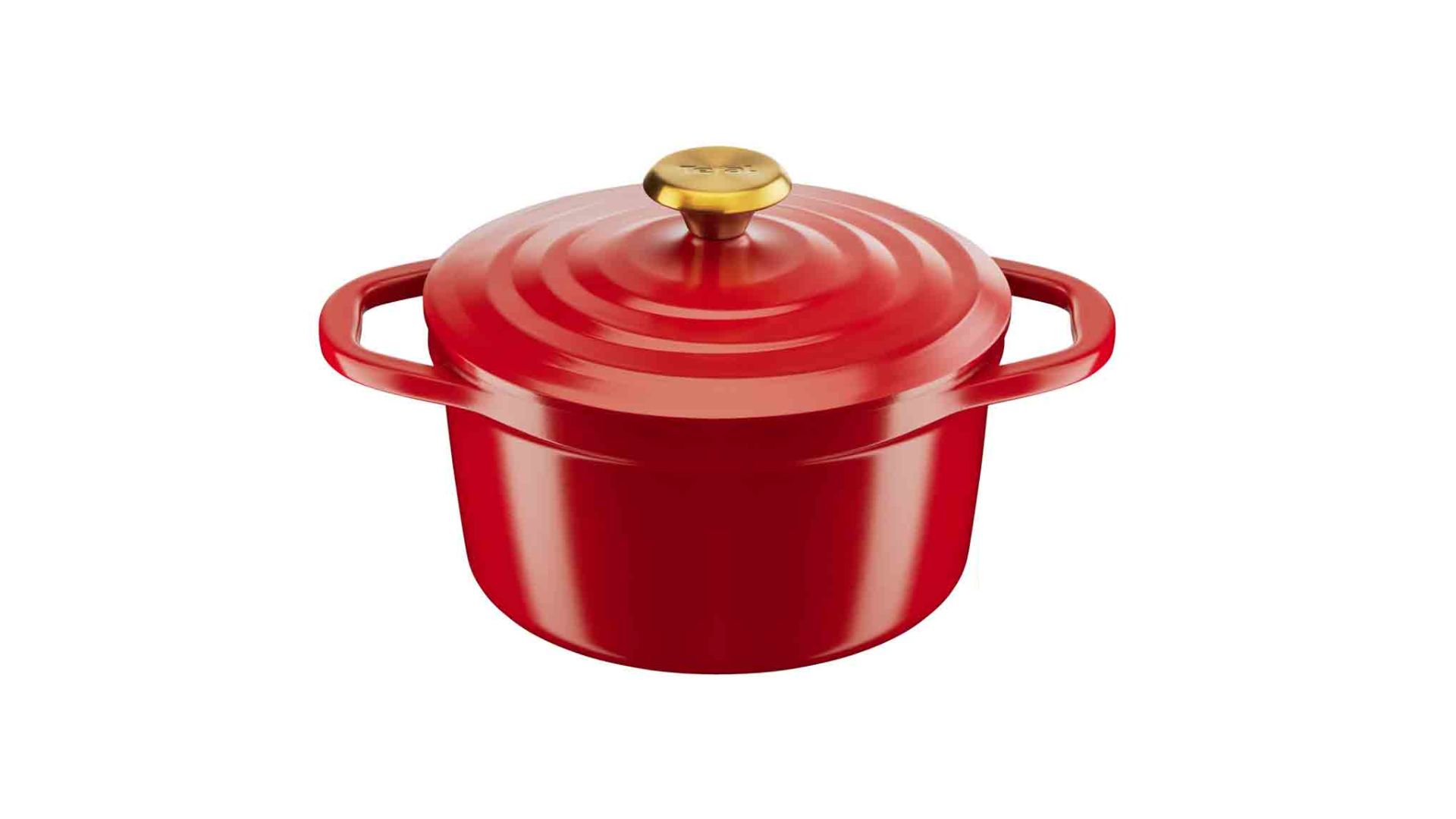
RRP: £81 | Materials: cast aluminium | Size: 20-30cm | Dishwasher safe? Yes | Oven safe? Yes | PFOA-free: yes
I know, cast aluminium isn't cast iron, but those pots can be really heavy. Tefal's innovative, lightweight cast aluminium stewpot looks chic and works as well as the other cast iron pots that I tested. I physically couldn't burn anything to the bottom of the casserole dish.
You can read more in Laura's Tefal Air Cast Aluminum Stewpot review.
How we tested the best induction pans
Look and feel
The first thing we assess any induction pan on is how it looks and feels. Some are designed to be a style statement in your kitchen. Other pans have more functional designs, so these should score top points for ergonomics, stackability, and storage. We look for smooth, even finishes all over; handles that have been riveted or welded into place; and a comfortable cool grip. Consistently thick pans, crafted from high-quality stainless steel aluminium and cast iron are often better quality, but we don't want them to be too weighty, otherwise, it'll be a task and a half to get them from the stove to the sink.
Suitability for purpose and performance
The next, possibly most important, task is how well the pans perform in practice. The best induction pans will fly through our tests, distributing heat evenly, with perfect non-stick, and an ergonomic design.
The way that we test this is through relentless, rigorous cooking tasks. The first task we give our pans is scrambled eggs and porridge. The way that your eggs or porridge ends up is largely down to how heat has been distributed across them. We want soft, creamy scrambled eggs and perfect porridge. When we've served up, we don't want to have to scrape a single oat off the sides of our pan. If the non-stick works, the pan should be clean.
Then, we'll move on to our frying tests. This starts with fried onions since the sizzling noise and caramel colours are really reactive to changes in heat. We change how hot the hob is and see how the pan handles it. The next frying test tackles pancakes since you can see the golden brown spots on them. We want our pancakes to be cooked right through, again with the heat evenly distributed across the base. If the non-stick does its job too, we're on to a winner.
The final, toughest test is on caramel. This is ultra-sensitive to heat and seriously sticky, so if we can make some golden caramel without creating some serious mess, the pans have done a good job.
Once we're done with the practicalities, we'll test how easy the pans are to clean. You'll want to preserve the finish and coating on your pans, which means minimal scrubbing. If the non-stick does its job, this should be a breeze.
Read more about our thorough reviewing processes in our how we test induction pans explainer.
To determine the induction pans that should make it into this guide, we get together and put the pans against the ones which we consider to be the best on the market. We'll compare their performance, quality, and value for money, deciding if we think the pans are hot stuff, or not yet perfect. Some pans come with guarantees (these can range from five years to lifetime guarantees). The guarantee probably won't cover aesthetic concerns, but it's great if you can invest in pans that you know you can live with for a lifetime.
After all that, our experts will let you know who we think the pans are suitable for, as well as who we think they won't suit. Our aim is to place you with the perfect pans for your kitchen, so we only want you to have good surprises if you choose to make an investment.
How to choose the best induction pan for you
Before buying your new induction cookware, it’s important to clarify three things – your budget, the main purpose for buying the equipment, and your storage:
- Budget and type: The best induction pans vary vastly in price. Often, this is because you can buy induction pans as sets or as individual pans. Consider which type you need. For example, if you’re moving into a new home, you may need a pan set to cover the basics if you want value for money. If not, you may just need a single frying pan, as an upgrade to your current one. Generally, spending more on your induction pans will likely increase the guarantee. Pricier pans tend to be of higher quality (not always, but generally speaking).
- What you'll be cooking: Non-stick frying and griddle pans are good for when you want to minimize the need for additional fat. However, according to several chefs we spoke with, when cooking sauces, pots without non-stick technology are preferable as you get a better de-glaze and caramelization. Richard Bramble, a chef who runs a fine dining private catering, Bramble Dining, also told us that induction pans are worth buying if you cook in big batches. He said, "If you’re cooking in a higher volume like a big pasta dish, induction, in general, is better because it gets back up to temperature so quickly that it helps retain the heat."
- Your storage: We've listed the best individual induction pans and sets below, but the one you choose to buy will depend on how much space you have for them. If you're clearing out your existing pans to make way for a new load induction pans, one of the sets may be best for you. But, some might only have space for a new induction wok. Bear this in mind when browsing.
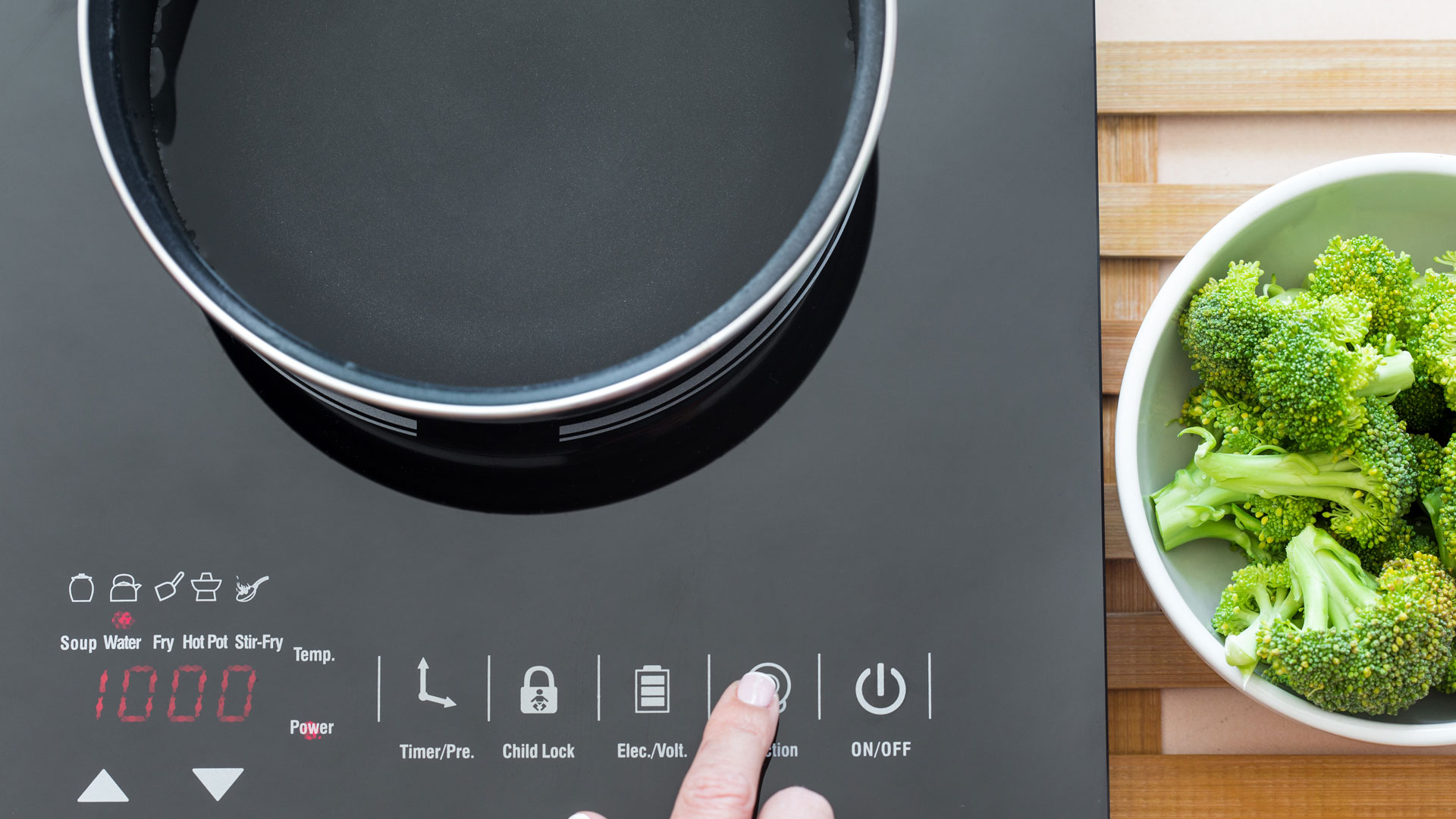
FAQs
What pans work on inductions hobs and why?
If you're new to induction pans and hobs, you might be wondering, how do induction cookers work? For the best induction pans to work on an induction hob, they must have a flat magnetic base. Pans that are appropriate will have a coil shown on the box and a magnet will stick to the base of the pan (if the magnet does not stick strongly to the bottom of the pan it will be less effective when heating).
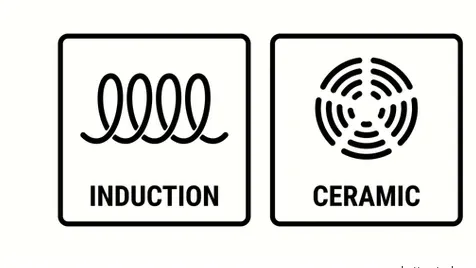
Here is an example of the coil you'll see on a box that tells you the pan is induction safe.
This means that all kinds of pans can work with induction hobs – such as non-stick pans, stainless steel pans, and cast iron pans – as long as they have one of these two things. If they are not induction-specific pans, many pans will also explicitly state whether or not they work with induction hobs on the product description.
You can also test pans before purchase. During a chat with Jessica at The Langham's cookery school Sauce, Michelin star chef Michel Roux Jr suggested carrying a strong magnet with you when you go to purchase your induction pans so that you can see for yourself how well the pan connects.
It is important to note that the heating process in induction hob cooking takes place in the base of the pan, and therefore if the pan is not compatible it will not work and the hob will remain cold.
What pans cannot be used on induction hobs?
For your pans to work on induction hobs, they need to have magnetic properties. So, if you have copper, aluminium, glass, or ceramic pans, they won't work. Even though cast iron is magnetic, if it has a rough or uneven bottom, it might not work as well as cast iron with a smooth base.
Even though stainless steel pans are often a safe bet for induction hobs, they need to be compatible with induction cooking. Cheaper pans will have a low nickel content or not enough magnetic material to work effectively. Even if the base of a pan is magnetic, some cookware with non-magnetic handles won't work, so always check the certification.
Finally, if your cookware has an uneven bottom, whether that's deliberate and your pan is specialty or as a result of years of use, these won't work. It's always a good idea to check that your pans are induction-compatible.
Is it important to look for induction pans that are PFOA-free?
In each product we have reviewed above, we have noted whether or not the product is PFOA-free. Various items – including clothing, carpets, takeout boxes and cookware, as well as the air we breathe and the water we drink – contains PFOA (perfluorooctanoic acid – also known colloquially as C8).
This can cause concern, because they stay in the environment and the body for long periods of time, and some studies (though it hasn't been conclusively proven) have suggested a link between PFOA exposure and cancer. As such, pans that are free from PFOA are generally preferred for customers.
But, while a PFOA-free pan is preferable, it's worth noting that non-stick cookware that is not PFOA-free is still one of the smallest exposures of PFOA that can be found in the household. And, just because an item is PFOA-free does not mean that it is completely safe and harm-free, as often manufacturers swap them out for other chemicals.
It's also good to know that when even the very best induction pans become scratched or overheated, the potential dosage of PFOAs consumed may increase. This is why many manufacturers recommend changing pans when damage occurs.
If you want to read more, here is one of the main studies on PFOA.
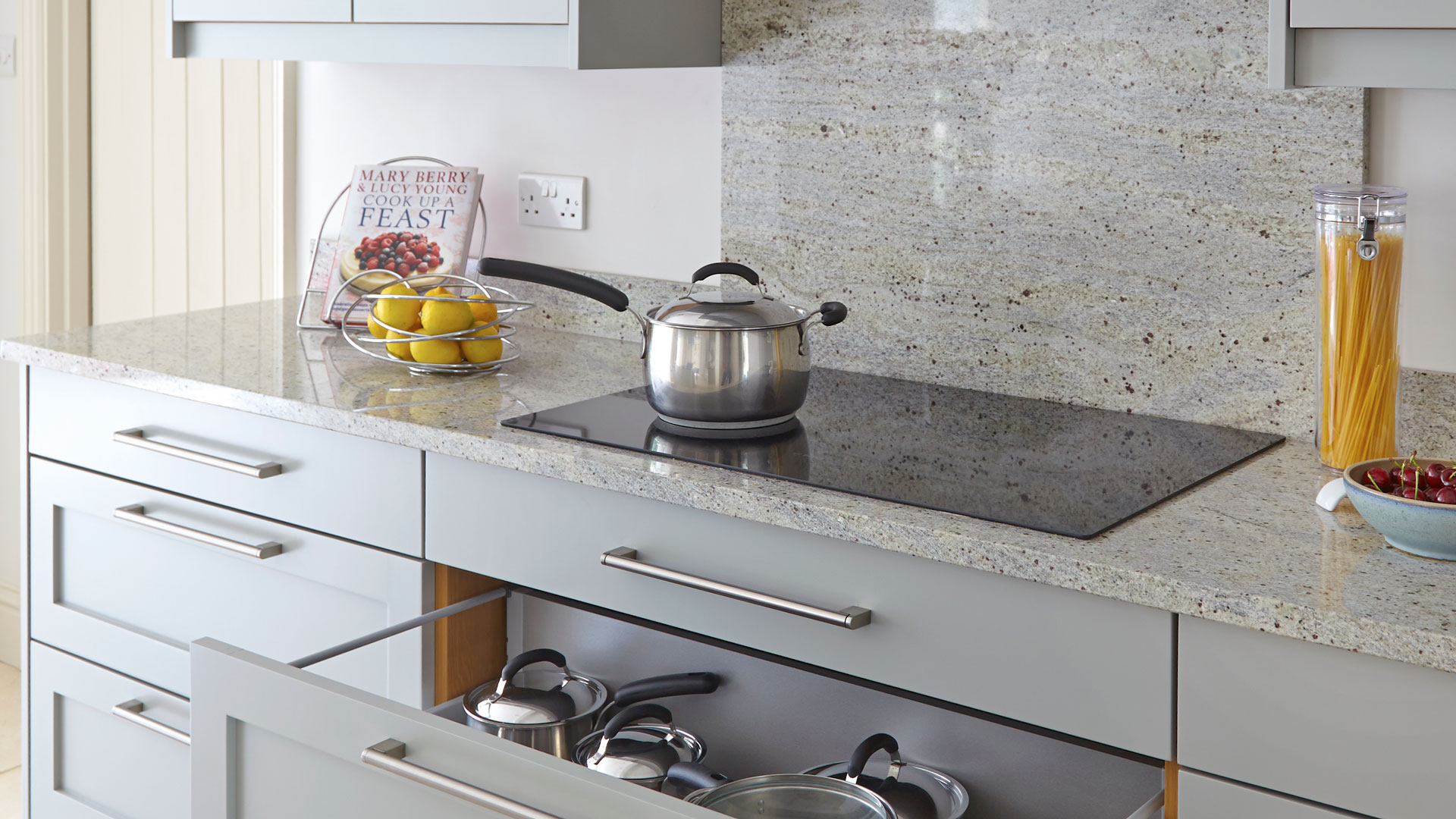
Do you need to buy more expensive induction pans for a better result?
Do you need to spend more on an induction pan for a better experience then? Opting for a more premium purchase can sometimes pay off. In my opinion, you get a much better deal with a more expensive pan.
Yes, they cost more initially but consider it a worthwhile investment because you won’t have to replace them every five minutes. This is because induction hobs are really powerful and as a result pans made from cheaper materials tend to warp and buckle, which means in the long run you can end up buying even more pans.
Peter Sidwell, chef and cooking expert at Cook Serve Enjoy, agreed, saying, "Well-built pans can last for years if you look after them. Going for cheap pans puts you at risk of shoddy cooking, owing to materials that quickly warp (so you stop getting that good energy distribution) and the non-stick coating coming off within a handful of uses."
"However", Sidwell continued, "if you don’t cook that often you can get by using cheaper induction pans, which are quite solid – but you will still need to replace them every couple of years depending on usage."
Once you've bought your pans, be sure to read up on our clever pan storage ideas so that you can keep them organised and in the best condition.
Can I use Le Creuset on an induction hob?
You'll be pleased to know that your lovely Le Creuset is probably compatible with your induction hob. Le Creuset's enamelled cast iron is magnetic, so suitable for induction cooking.
If you want some quick checks for whether your Le Creuset will work, here's what to look for:
Make sure that your cookware has a flat and smooth base, as well as an enamel coating. The base is important for making good contact with your induction hob, ensuring you get even heat distribution. The enamel coating protects your cast iron and makes it easy to clean. When you're washing yours, try to avoid any abrasive washing-up liquids and scrubbers. It's also important that your pots and pans match the size of the heating zone. You can use different sized Le Creusets, but the hob won't be as efficient.
Our food team recommends starting your Le Creuset on a lower heat. Cast iron retains heat really well, so once it's hot, it will stay hot too.
What are the disadvantages of using an induction hob?
At Woman & Home, we use (and love) induction hobs, so we have pans that are induction hob-friendly. If you haven't already got an induction hob, it's worth checking that your cookware is compatible, because if yours doesn't have a magnetic base, you'll need to buy new pots and pans. That's why we've got our buying guide to show you which are the best induction pans on the market.
There are some other disadvantages to induction hobs, such as the slight humming or buzzing noise that they make. Whilst lots of people love how quickly induction hobs can heat up to precise temperatures, they take a long time to cool down. You might end up burning your food if you turn the hob off but leave your pan in place. We've all done it at least once.
You'll also want to think about cost since these can be more expensive upfront and they require a very specific electrical set-up (usually a dedicated circuit with a higher amperage). After spending a lot of money on your hob, you'll need to maintain it carefully too. Induction hobs are often covered in a glass-ceramic surface, which makes them easy to clean. However, if you're not careful, it will scratch and crack.
There's always a long list of pros and cons to what you choose to invest in, but the fact that we cook exclusively off induction hobs in our professional test kitchen speaks volumes. Many of us have induction hobs at home too and, all of those who don't, have portable induction hobs.
If your kitchen is not yet equipped with this nifty cooking technology, check out our guide on how to pick an induction stove. Meanwhile, if your induction hob looks like it's seen better days, it may just need a thorough cleaning. If that's the case, learn how to clean a stovetop effectively so you can restore it to perfection.
Sign up to our free daily email for the latest royal and entertainment news, interesting opinion, expert advice on styling and beauty trends, and no-nonsense guides to the health and wellness questions you want answered.
Jessica is a Senior Food Writer at Future and is an enthusiastic, self-taught cook who adores eating out and sharing great food and drink with friends and family. She has completed the Level 1 Associate course at the Academy of Cheese and is continually building on her knowledge of beers, wines and spirits. Jessica writes food and drink related news stories and features, curates product pages, tests and reviews equipment and also develops recipes which she styles on food shoots.
- Laura HoneyHomes Ecommerce Editor
- Tamara KellyLifestyle Editor
